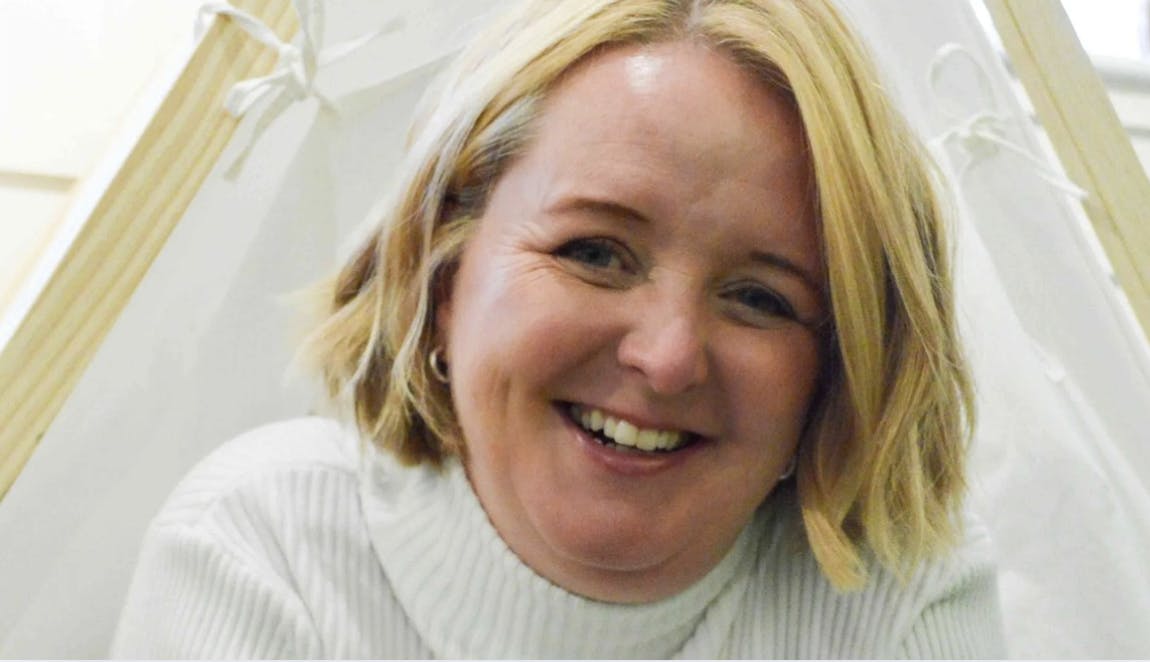
Expert Consulted: Dr Amanda Gummer PhD
One is such an exciting age for you and your little one. They're certainly not babies anymore, and their brains and bodies are ready to explore anything and everything (cue the baby proofing!). This is a crucial age for their development, and their brains and bodies need stimulation to help with that development.
Luckily, they're also fascinated by the world around them, so you don't need to go far or spend lots of money to find toddler play ideas that will keep them active and engaged. Most of the 30 activities for one-year-olds that we've rounded up here can be done at home, just using items you might already have around the home. We've also drawn on the expertise of child development expert and founder of the Good Play Guide, Dr Amanda Gummer, to find out just why play is so important for toddlers and how to build it into your day.
It goes without saying that you should always supervise your toddler while they're playing. From stopping them from putting everything in their mouths to making sure they're safe around water, it's essential to keep an eye on them at all times. Of course, this also provides a wonderful opportunity for you to help with their development, whether talking to them about what they're seeing, hearing or feeling, or showing them how to use their newfound skills.
1. Play-Doh
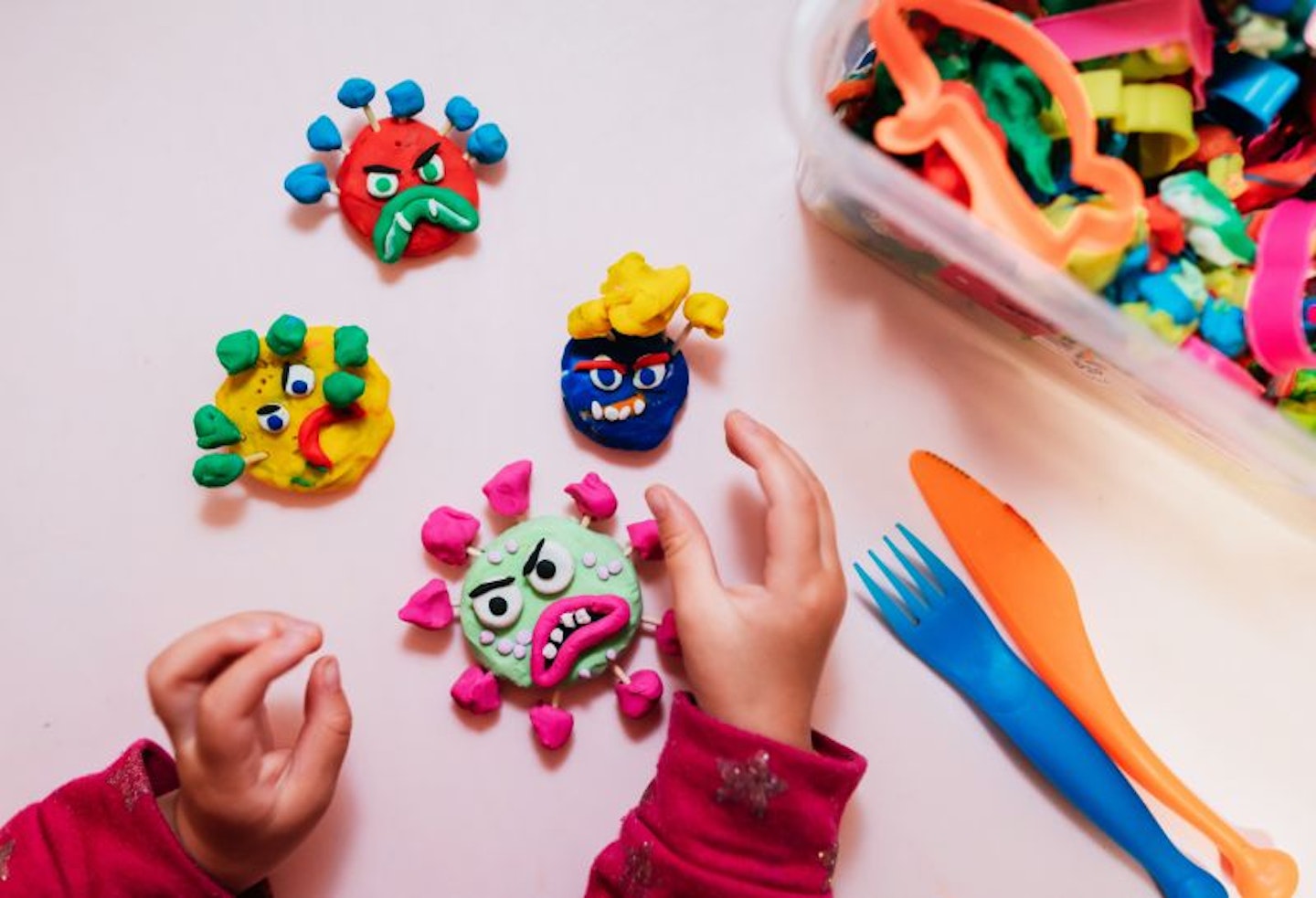
A classic go-to for any baby and toddler, Play-Doh is a fun and safe way to let your tot explore their pincer grasp and also help develop their hand muscles. It's also pretty relaxing for parents, too, if you ask us!
Even better, it's super easy to make at home. Just follow this simple tutorial, which requires five ingredients we all have in our kitchen for a safe and cheap Play-Doh for your toddler.
Materials: Play-Doh, cookie cutters and rolling pins, etc
Why it helps: Sensory exploration, hand-eye coordination, creativity, imagination, and development
Safety tip: Keep an eye on your little one at all times to make sure they don't try to eat the Play-Doh
If you'd prefer to buy the Play-Doh, this Rainbow Pack is a great start, and you can also get fun Play-Doh accessories.
2. Toddler busy board
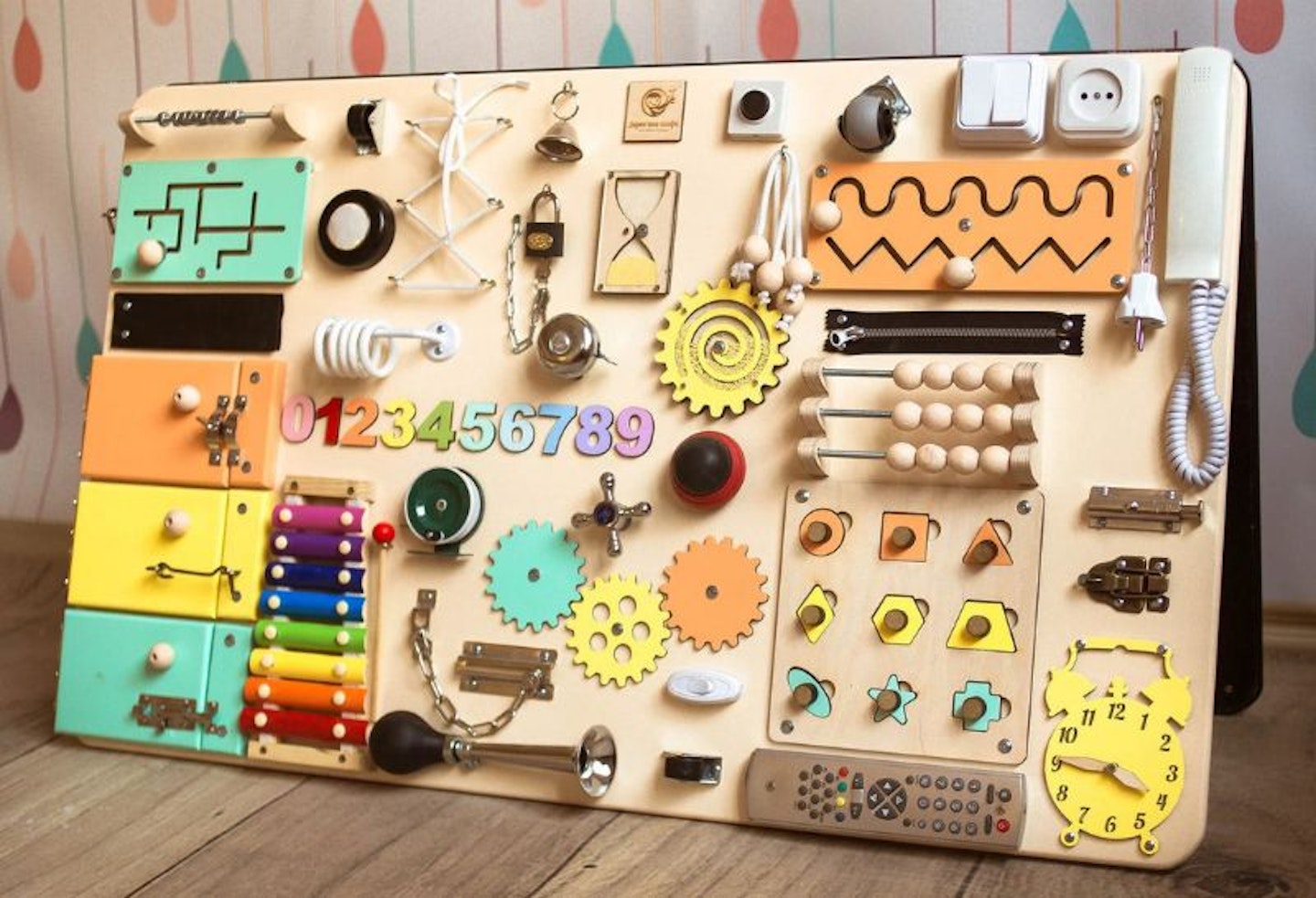
You'll have no doubt come across these toddler busy boards before; they're basically a board full of all the little fiddly things your child's hands usually aren't allowed near (but always get to), such as door locks, keys, chains and any other fiddly thing they gravitate towards in the home, but presented in a way that's safe for them to explore. You can learn how to build your own Busy Board, and we love this Activity cube and Montessori busy board, which will keep them occupied for a long time!
Materials: Varied
Why it helps: Sensory exploration, hand-eye coordination, fine motor skills, and development
Safety tip: If making your own, ensure all items are securely fixed to the board
3. Messy play
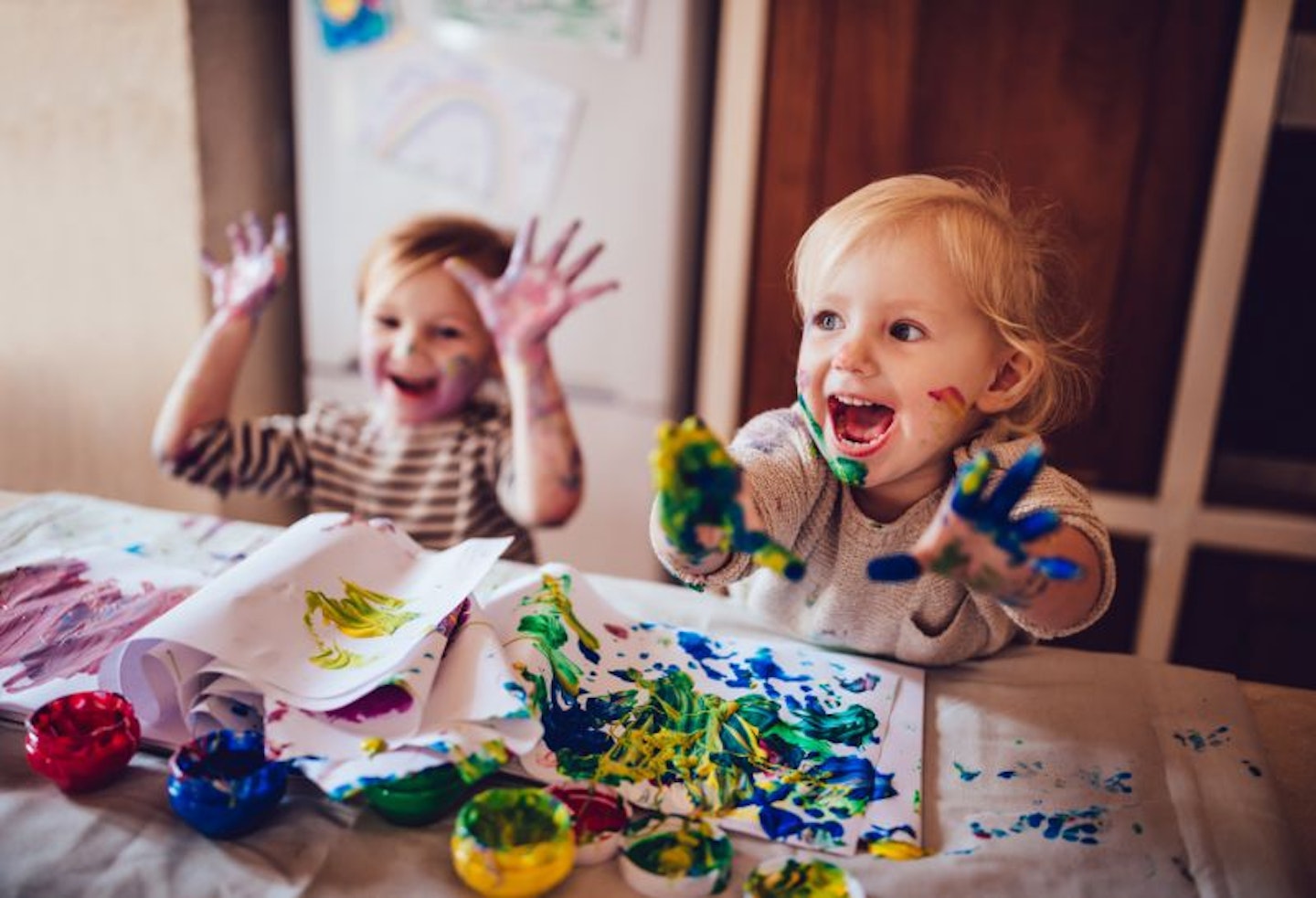
Not only is messy play great for getting those little hands working, it's also great for sensory development, even though it might be a little stressful for parents to watch. Top tips for keeping mess to a minimum? Take everything outside if it's summer, use a tuff tray or get yourself a big mat or tablecloth for the kitchen floor to scoop everything up with afterwards.
From finger painting to making slime, we've rounded up some of the best messy play ideas for your tot to have a go at here.
Materials: Varied
Why it helps: Sensory exploration, hand-eye coordination, fine motor skills, and development
Safety tip: Keep an eye on your tot at all times and make sure no pieces pose a choking risk
4. Ball scoop
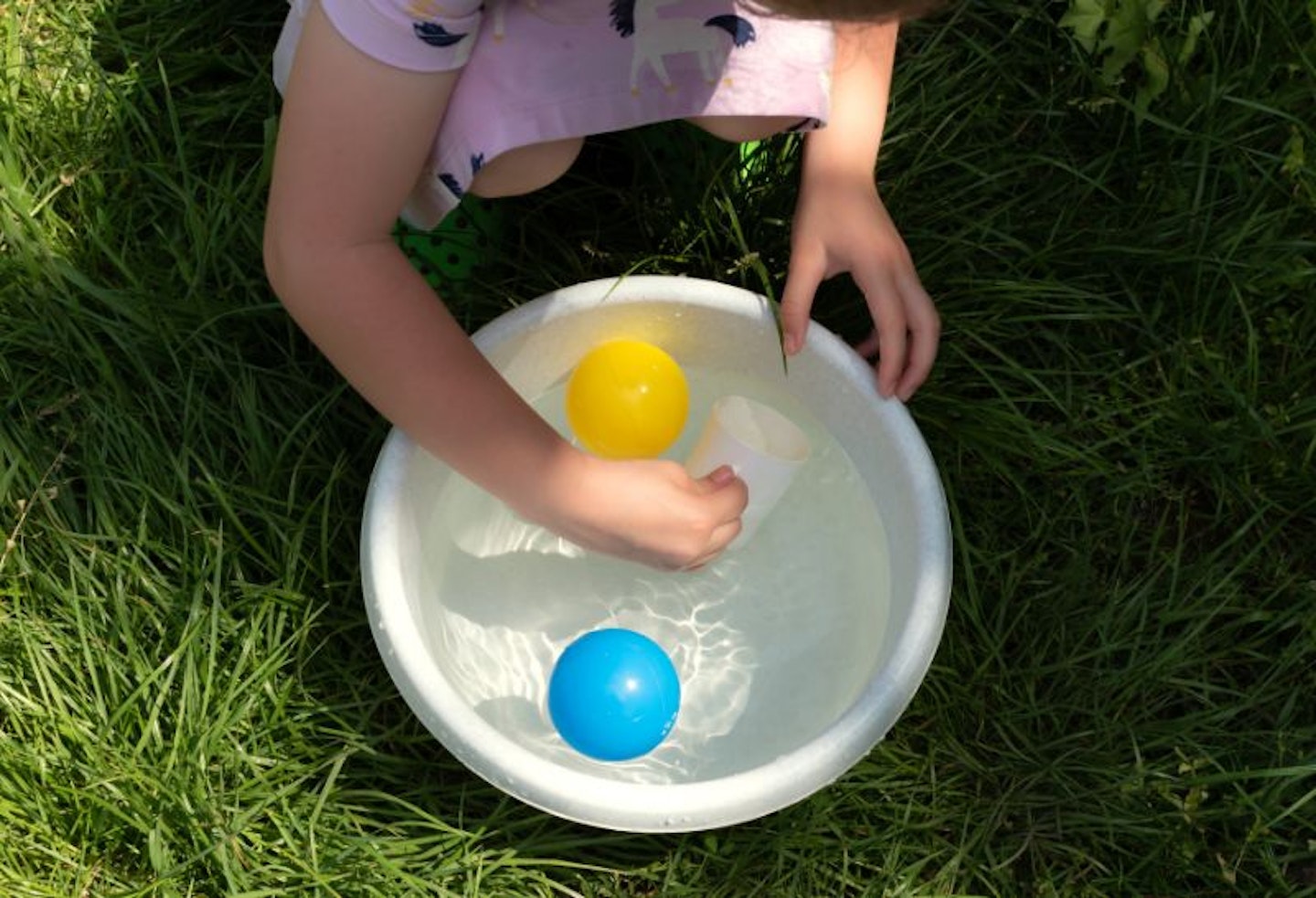
Water is so much fun for little ones, especially when the weather is warm. For this simple yet fun water play idea, all you'll need is a storage box, water, a sieve and some ball pit balls. You can challenge your tot to only fish out balls of the same colour, then see how many they can fish out at a time to improve their gross motor skills.
Materials: Washing up basin or bucket, water, sieve, balls
Why it helps: Sensory exploration, gross motor skills, hand-eye coordination, colour/type understanding
Safety tip: Supervise children around water at all times
5. Sensory play

Sensory play is a great way of keeping your one-year-old entertained while helping their motor skills, development and sensory awareness. We've rounded up our favourite sensory play ideas to boost your little one’s learning, development and creativity. From marshmallow fun to rainbow noodles, here are the best sensory play ideas for your tot.
Materials: Assorted
Why it helps: Sensory exploration, fine motor skills, hand-eye coordination, development, and creativity
Safety tip: Make sure the items you use don't pose a choking risk
6. Colour sorting activities

Matching skills are brilliant for your tot to learn at this stage, and there's no easier way to learn this than sorting colours into groups. From sorting pom-poms, pieces of Lego, paper or anything you can find around the house, getting your baby to sort these into piles makes for hours of simple fun and learning.
Materials: Any toys or items that can be sorted into types
Why it helps: Sensory exploration, fine motor skills, hand-eye coordination, colour/type understanding
Safety tip: Make sure the items you use don't pose a choking risk
This Colour matching game will help their fine motor skills and colour awareness, and it looks great too!
7. DIY Shakers
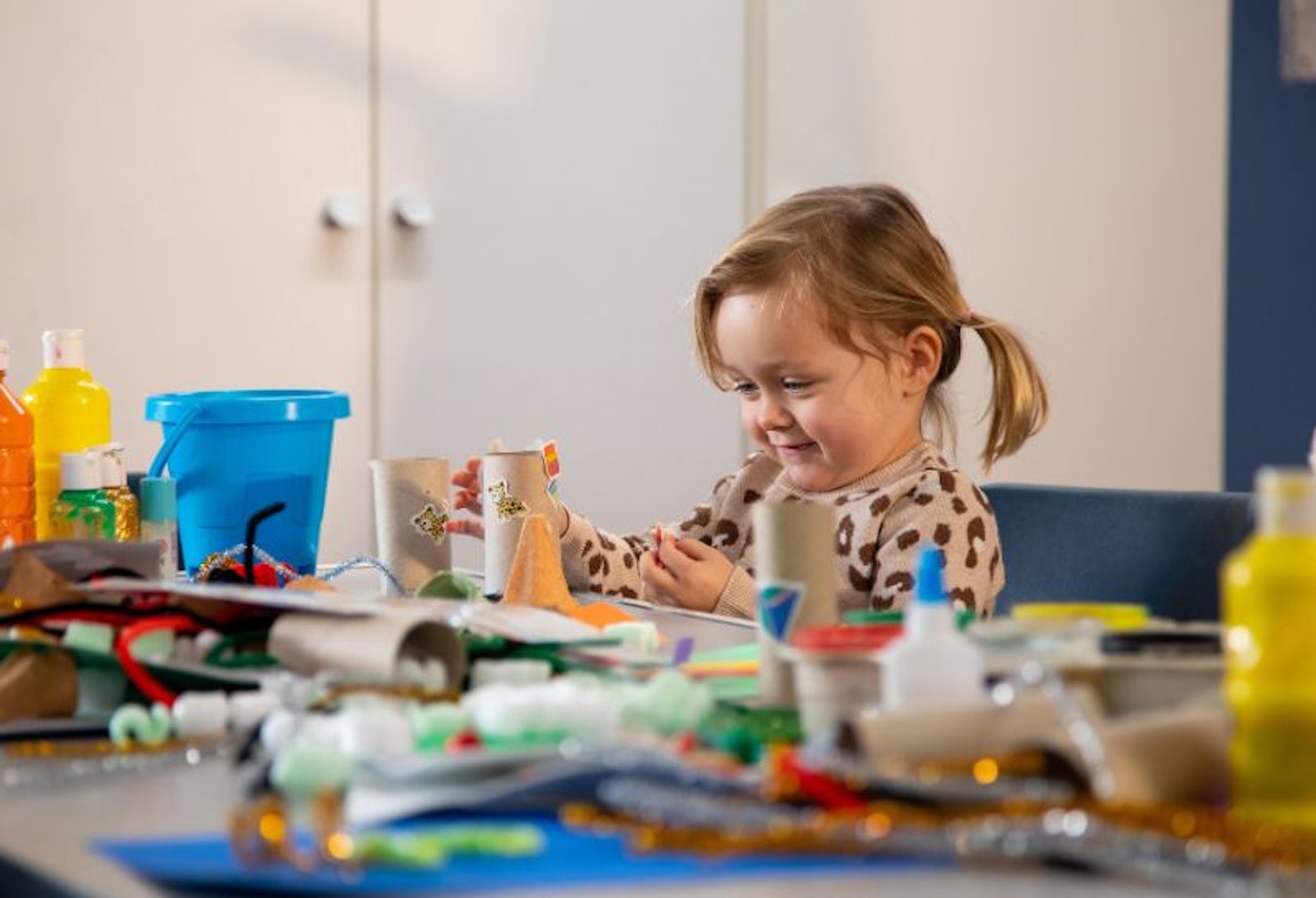
How many loo rolls do you get through a week? Why not put those little cardboard rolls to use by turning them into shakers? Simply use a milk bottle lid to seal one end using duct tape to secure, and pop some rice inside before sealing the other end. Then you and your little one can decorate with colours and stickers to finish off your DIY instrument.
Materials: Loo roll holder, rice, milk bottle top, duct tape, decorations
Why it helps: Sensory exploration, hand-eye coordination, creativity
Safety tip: Keep an eye on your little one to make sure they can't get their hands on the rice inside
8. Washing up
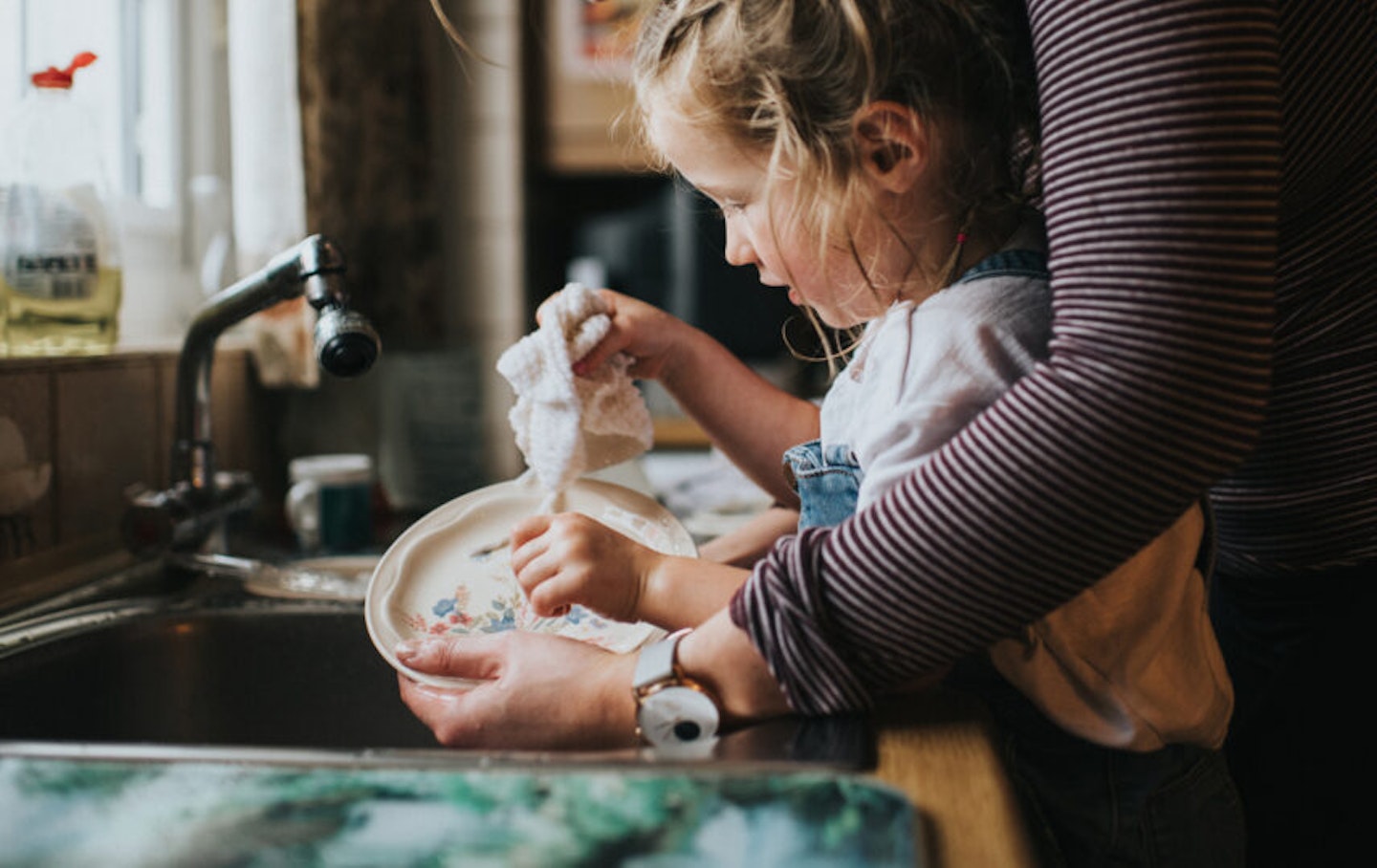
Another fun activity for water, pop some of their waterproof toys into a big storage box, fill with warm water and some gentle washing up liquid and give your tot a sponge or brush for a fun washing up game. Just remember to lay down plenty of towels for this one!
Materials: Storage box or washing up bowl, toys, sponge, brush, washing up liquid
Why it helps: Sensory exploration, hand-eye coordination
Safety tip: Always keep a close eye on children around water and never leave them unsupervised
9. Colander fun

Colanders can provide so much fun - not only are they great when it comes to playing in the water, they're also excellent for threading things like pipe cleaners through them, weaving them in and out. If your eardrums can take it, give your little one a wooden spoon and see what 'music' they can make as well!
Materials: Colander, pipe cleaners, wooden spoon
Why it helps: Sensory exploration, fine motor skills, hand-eye coordination
Safety tip: If using pipe cleaners, keep an eye out for any sharp ends
This Montessori colour sorting toy is a great option for developing their fine motor skills, without raiding the kitchen cupboards!
10. Pasta necklace
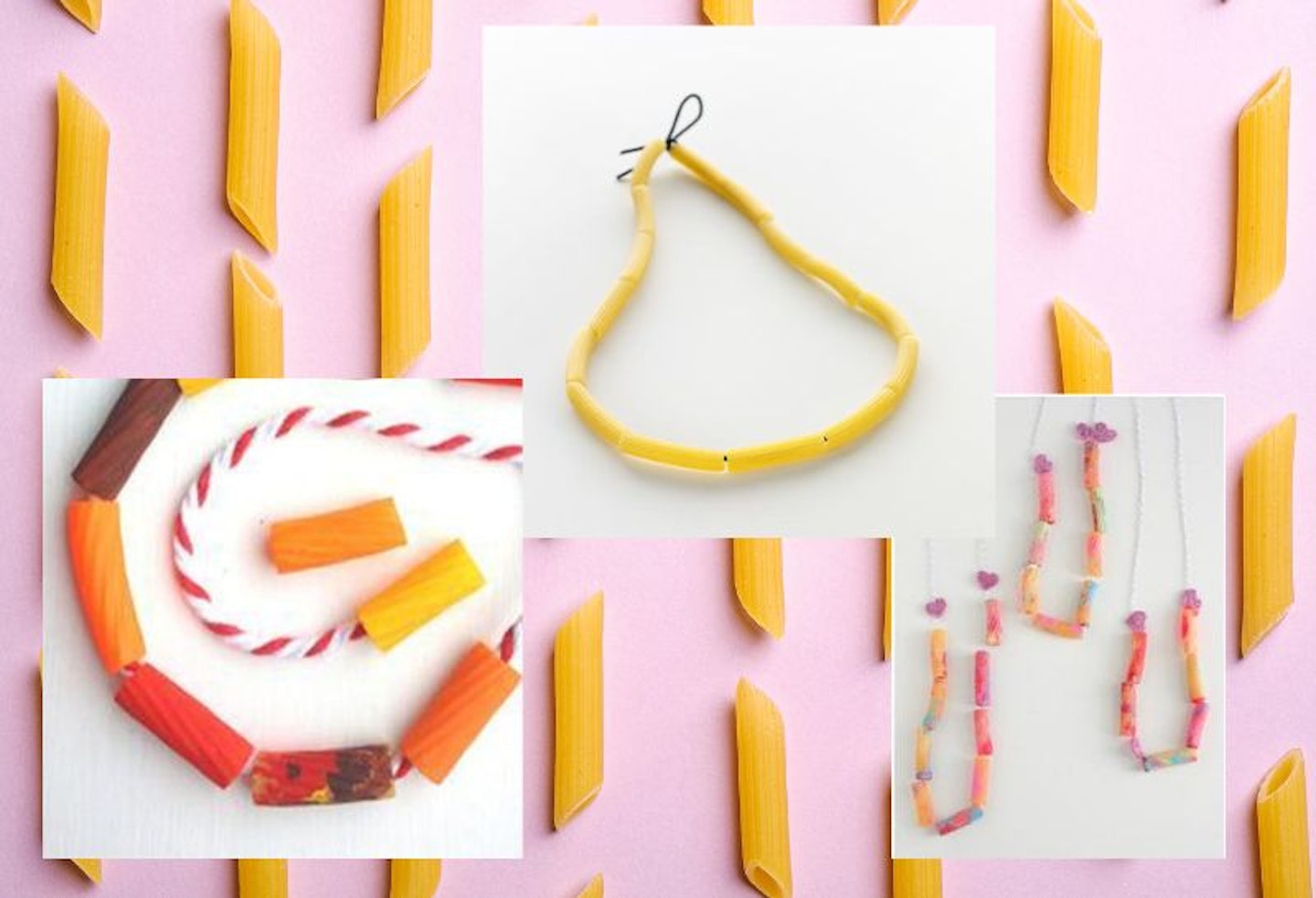
Ask them to make a nice necklace for a loved one with a simple penne pasta necklace and string. Take this fun activity to the next level by painting each pasta shape in bright colours. Threading the string through each piece of pasta is brilliant for developing that pincer grip.
Materials: Pasta tubes, string, toddler paint
Why it helps: Sensory exploration, fine motor development
Safety tip: Make sure they can't choke on the pasta pieces, and don't leave them unattended
11. Water play
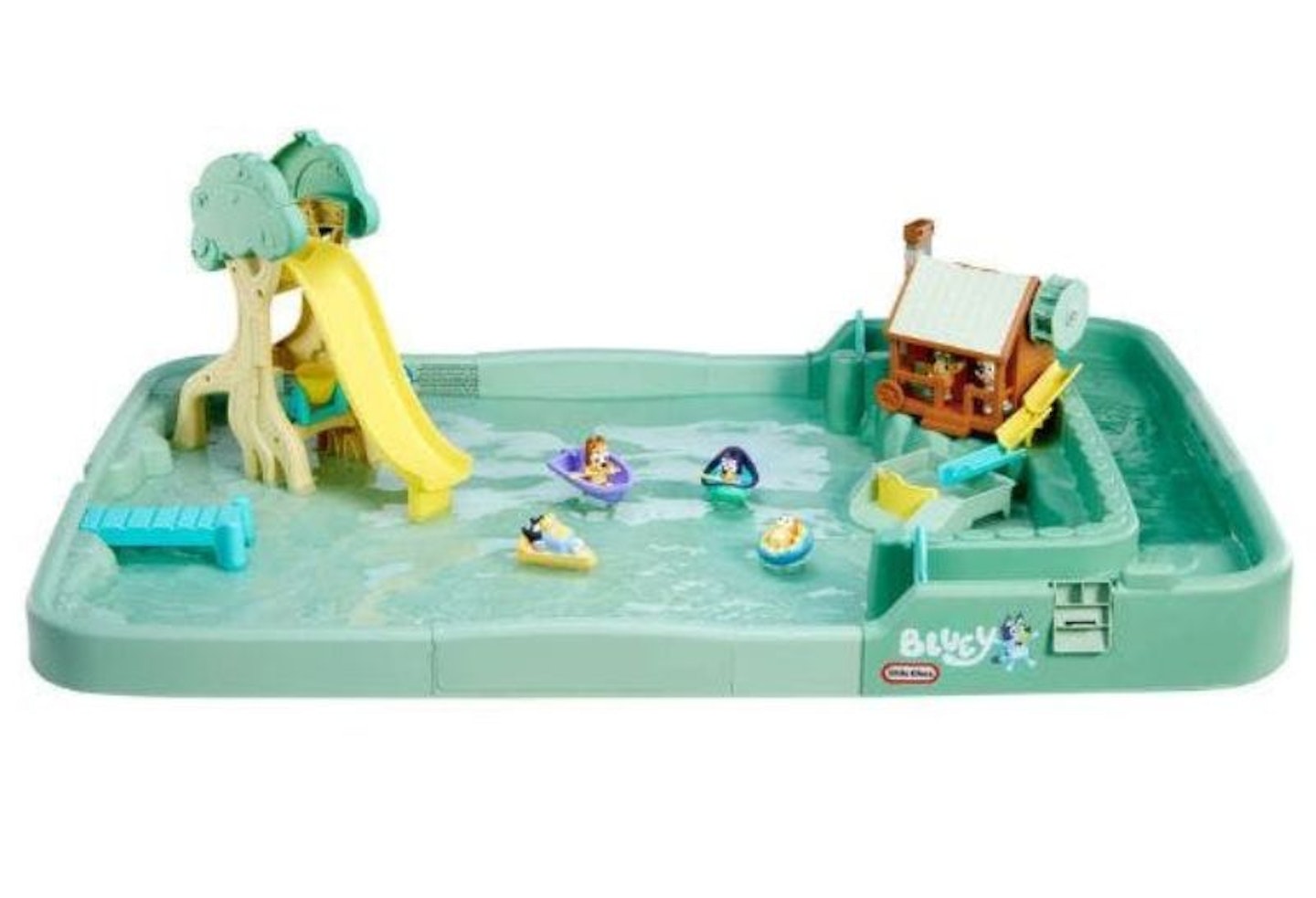
You might prefer to do this outside or have a mop handy, but your little one will love getting messy with water play. Fill a shallow tub with an inch or two of water and provide cups or spoons for scooping and pouring. Let your child explore the sensations of water, learning about cause and effect and hand control as they splash, pour, and feel.
If you want to (try to) keep the water more contained, you could use a water table like this Bluey Bushland Adventures splash pad, which will let them splash away with their favourite characters.
Materials: Shallow tub, water, cups, spoons
Why it helps: Sensory exploration, fine motor development
Safety tip: Never leave your child unattended near water
12. Stacking cups
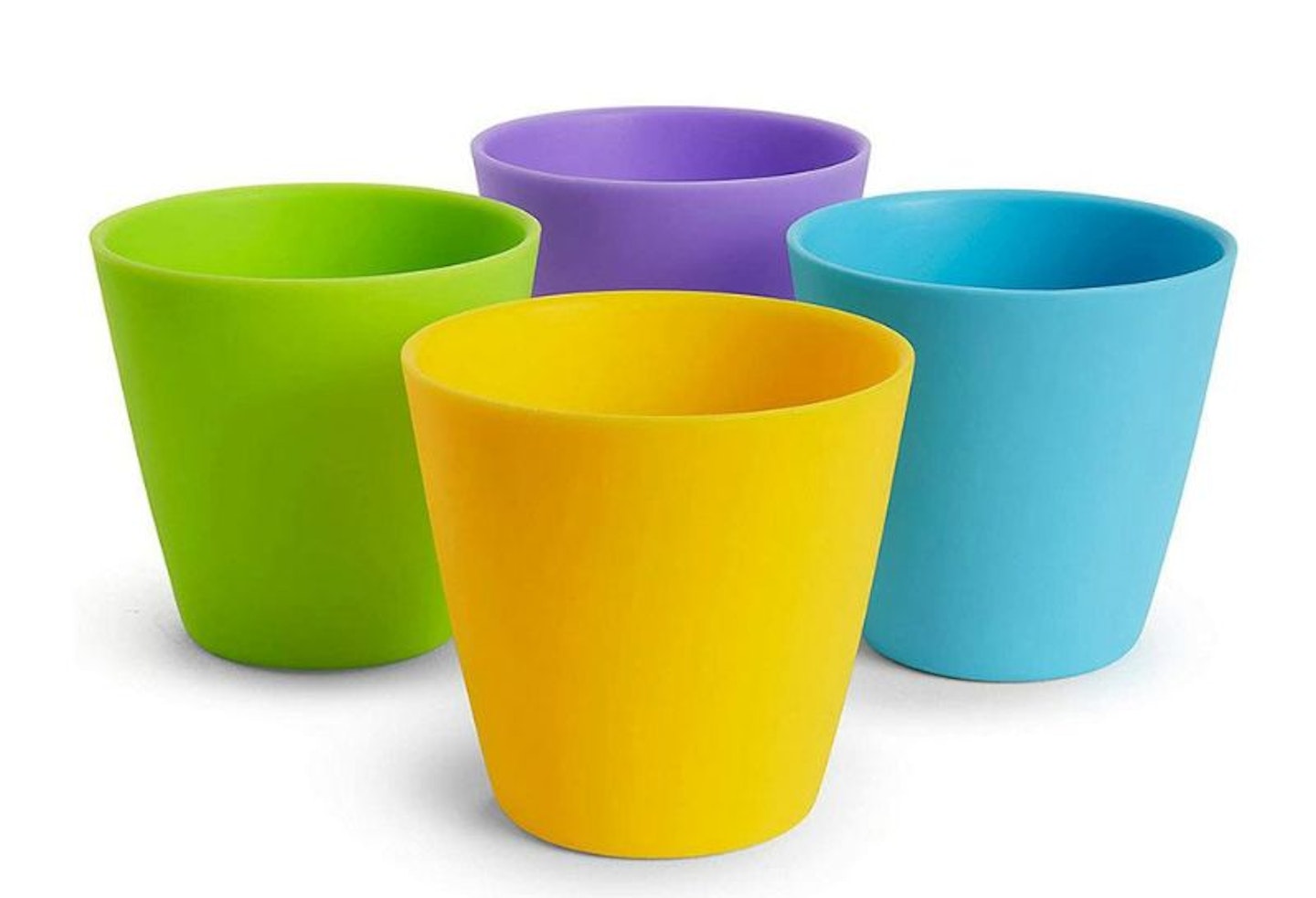
Encourage your child to stack plastic cups on top of each other and knock them down. Show them how to nest the cups inside each other, too. Talk about the colours and sizes as you play together, supporting language and problem-solving as well as fine motor skills.
Materials: Plastic stacking cups
Why it helps: Fine motor skills, hand-eye coordination
Safety tip: Use large, non-breakable cups; supervise play
13. Kitchen disco
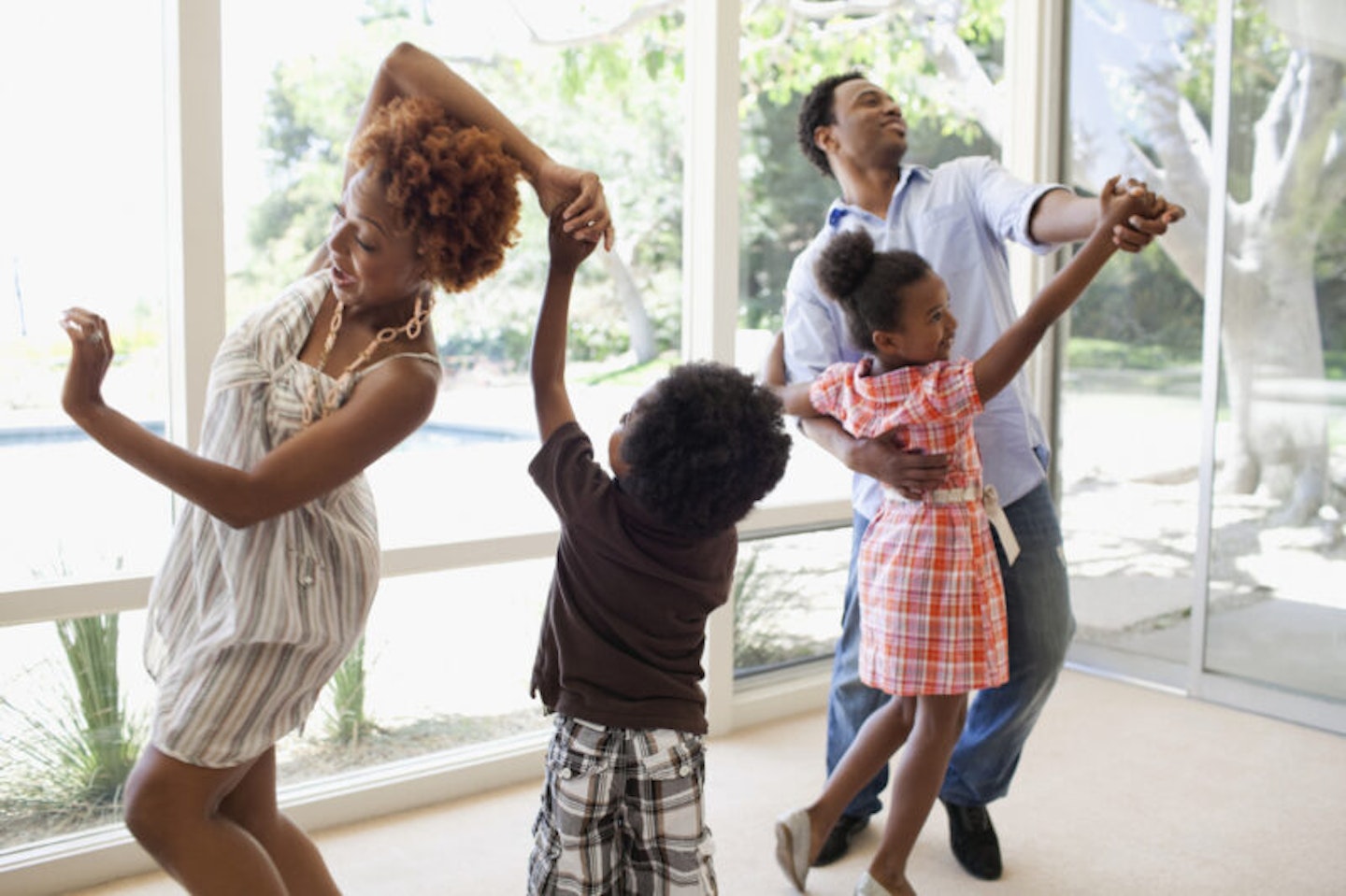
This one is completely free and lots of fun! Just put on some music and dance around with your little one. If they can walk, let them copy your dance moves (or bust out their own), and if they're not quite at that stage yet, just pick them up and dance around the room. Fun, memory-making and may even tire them out for bedtime. Top tip from the mums at Mother&Baby - set up your phone and film it to remind yourself of the fun times when they're too big to twirl around the kitchen!
Materials: None (though this Amazon Echo Dot Kids Smart Speaker will get the party started!)
Why it helps: Gross motor skills, sensory exploration, musical development
Safety tip: Make sure the floor is clear and there's nothing you can both bump into
14. Bubble chasing
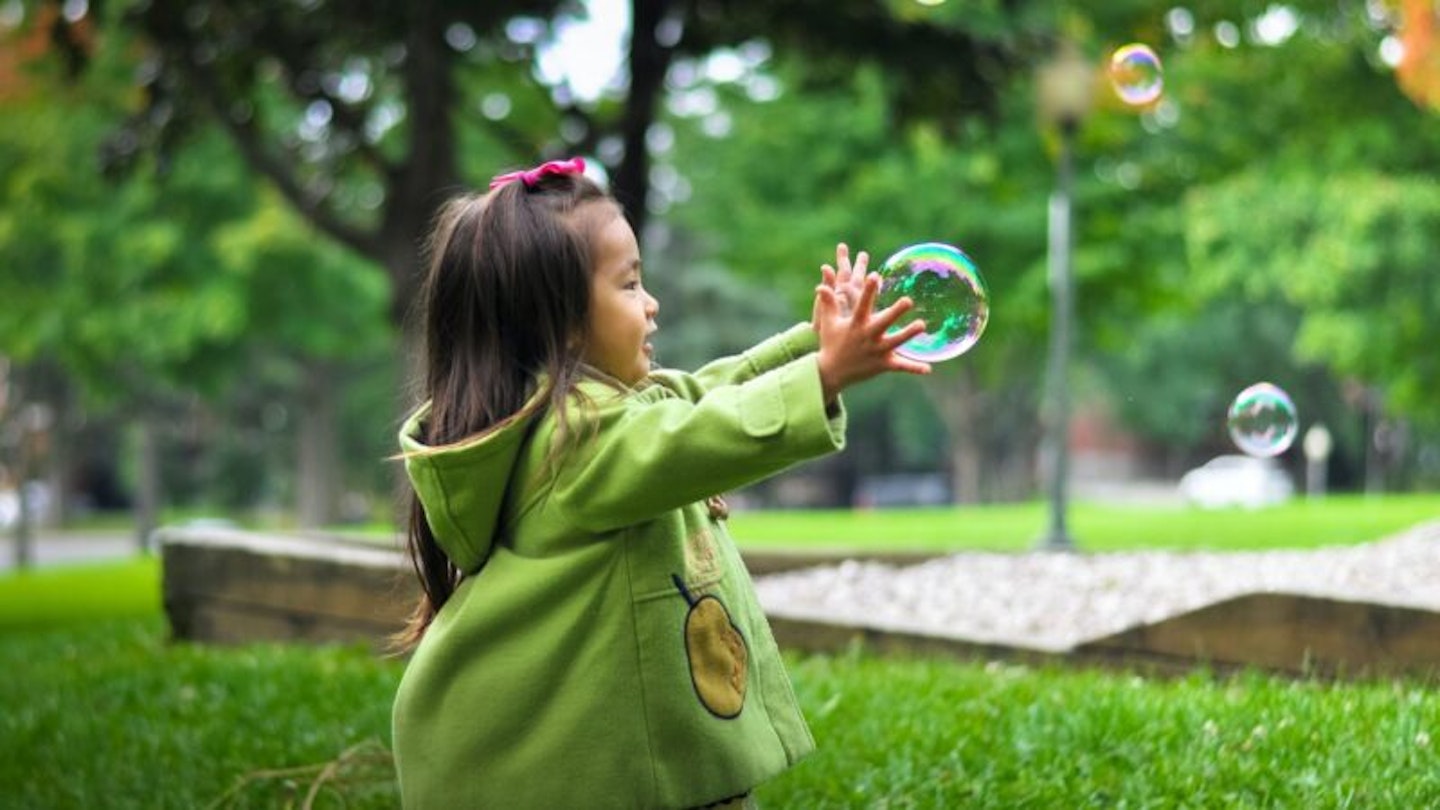
Blow bubbles and encourage your child to reach for or pop them. Watch as they crawl, toddle, and giggle while chasing the bubbles. This activity boosts balance, agility, and visual tracking while delighting your little one.
Materials: Bubble solution, Bubble machine
Why it helps: Gross motor skills, visual tracking
Safety tip: Avoid soapy spills; keep bubble solution out of your child’s mouth
15. Story time
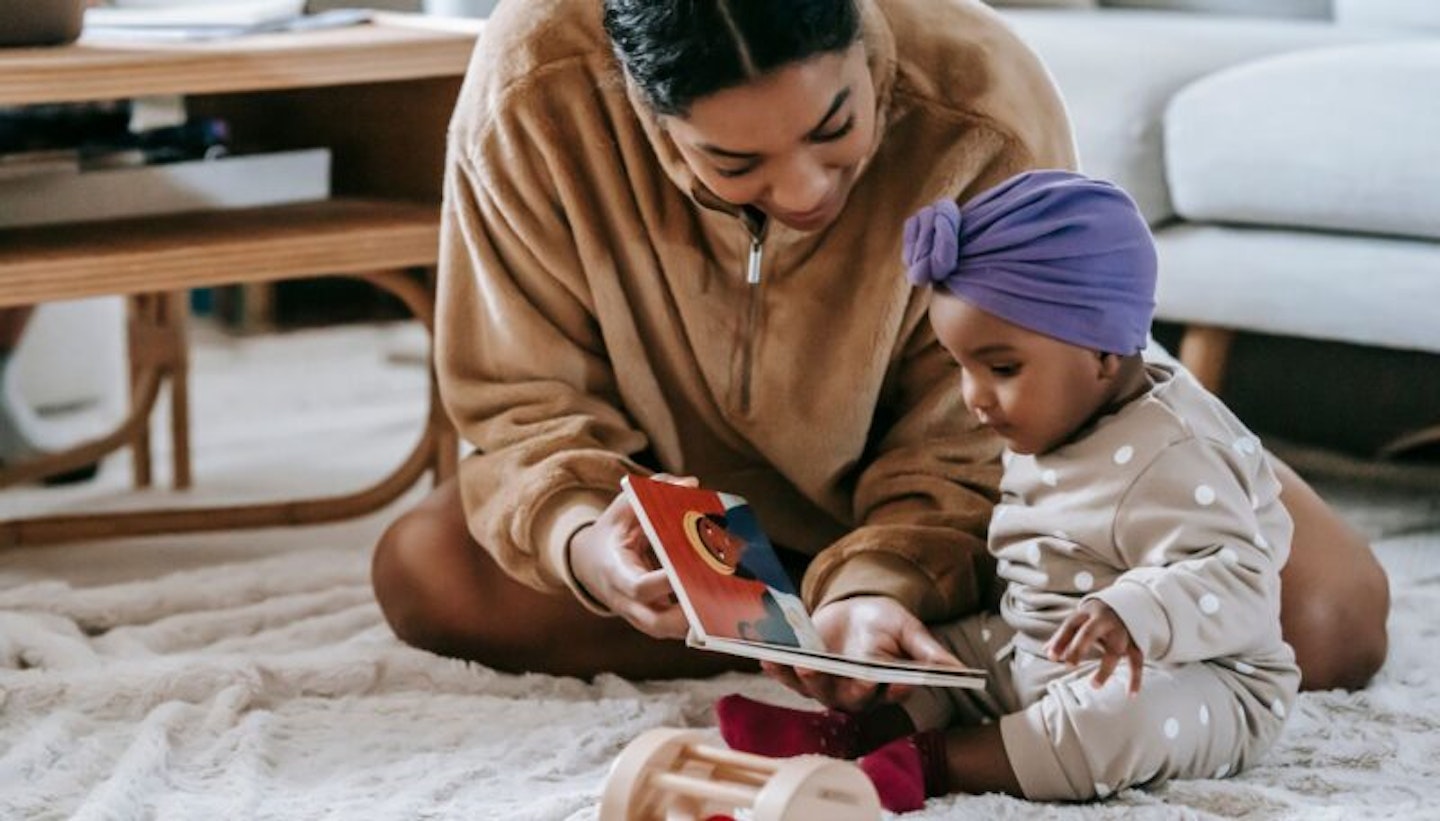
Cuddle up with your child and read aloud from colourful board books. Point to pictures, mimic animal sounds, and let your child turn pages. This encourages a love of books and enhances attention span and vocabulary.
Materials: Board books
Why it helps: Fine motor skills, language development, listening skills, imagination, and creativity
Safety tip: Using board books helps avoid torn pages or paper cuts
The Hungry Caterpillar is a great option that lets them get involved in turning the pages.
16. Texture walk
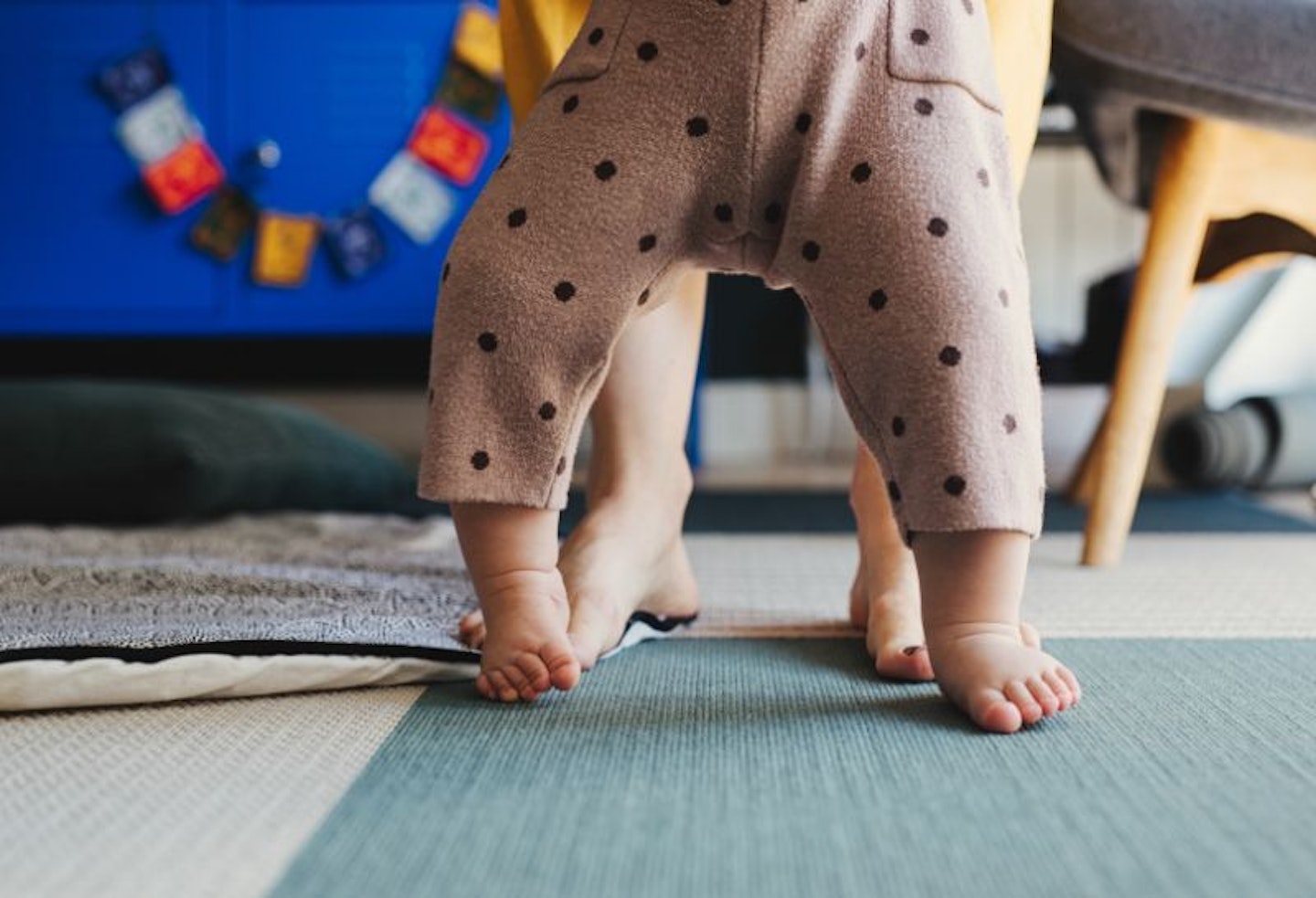
Arrange various fabrics on the floor - silky scarves, bumpy towels, soft fleece, for instance. Let your child crawl or walk barefoot over the different textures and talk about what they might be feeling to help with their sensory development and language learning.
Materials: Different types of materials
Why it helps: Language development, sensory understanding, and imagination
Safety tip: Ensure all fabrics are clean and free of loose threads or long pieces of material
To keep things more organised, these Sensory Tiles can be brought out time and again to help your tot explore different textures as they crawl and walk.
17. Peekaboo
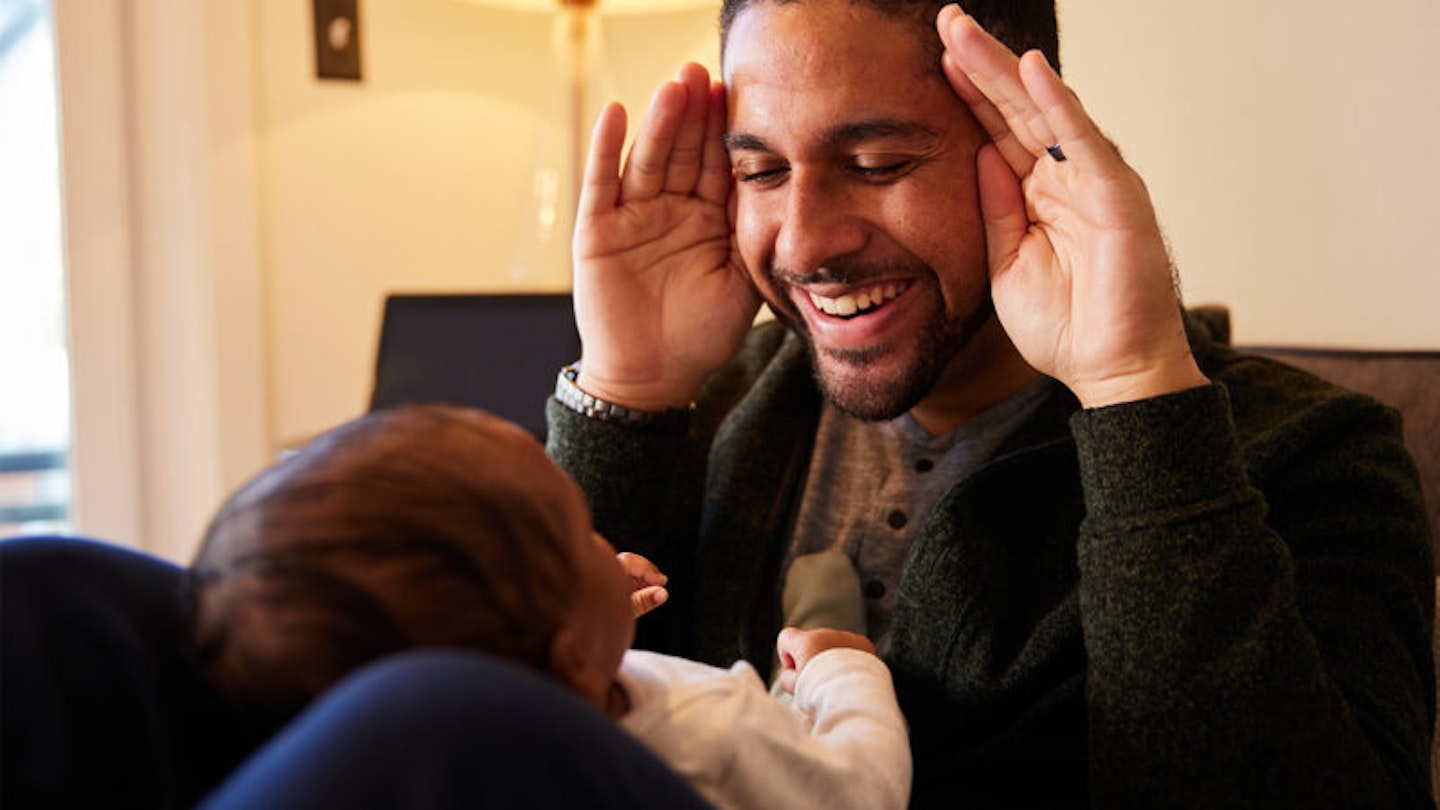
It's an oldie but a classic for a reason! For the uninitiated, the game of Peekaboo involves covering your face or theirs briefly with your hands or a lightweight blanket and saying “Peekaboo!" when you take them away. Watch your child giggle and anticipate your return. This teaches them that things (and people) still exist even when out of sight.
Materials: None
Why it helps: Understanding of permanence, cognitive development
Safety tip: If using a blanket, don't leave your tot unsupervised with it
We love the Peekaboo range of books to add a little more interest to the game, and this Battat Pop-up toy is another great way of teaching them cause and effect.
18. Finger painting
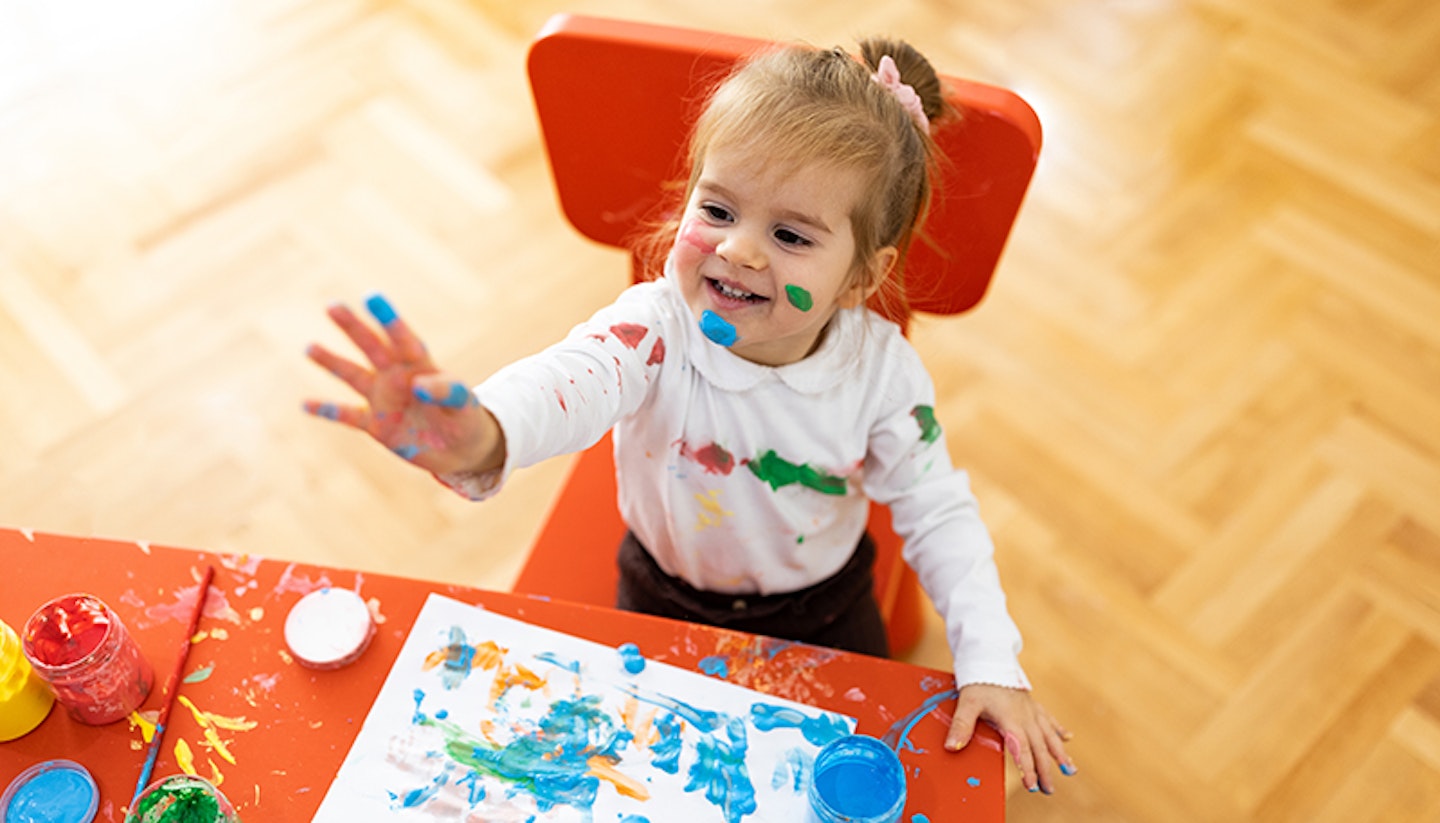
Tape a sheet of paper to a table or the floor. Show your child how to dip their fingers in the paint and make marks on the paper. Talk about the colours and encourage experimentation and sensory fun.
Materials: Paper, paint, and an apron
Why it helps: Creativity, fine motor skills, colour awareness
Safety tip: Ensure paints are non-toxic; supervise to prevent tasting
This brilliant finger painting book lets little ones explore colour and create their own images with just their fingertips.
19. Pillow obstacle course
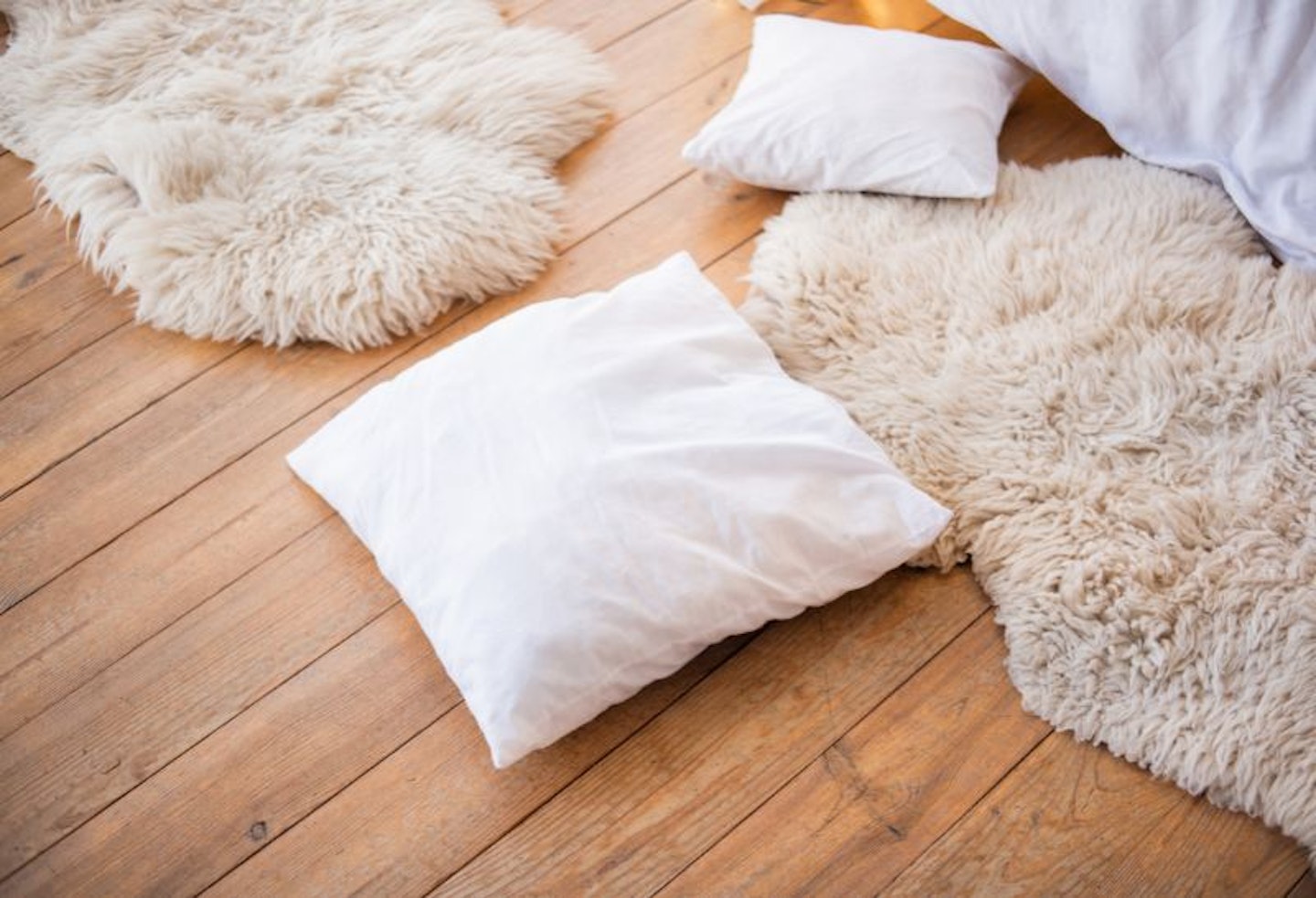
Line up pillows and cushions on the floor to create a soft, low obstacle course. Help your child crawl or toddle over and around them, practising balance and coordination while having a soft place to tumble.
Materials: Pillows, cushions
Why it helps: Gross motor skills, balance
Safety tip: Supervise closely and avoid doing it near hard or sharp objects
20. Snack sorting
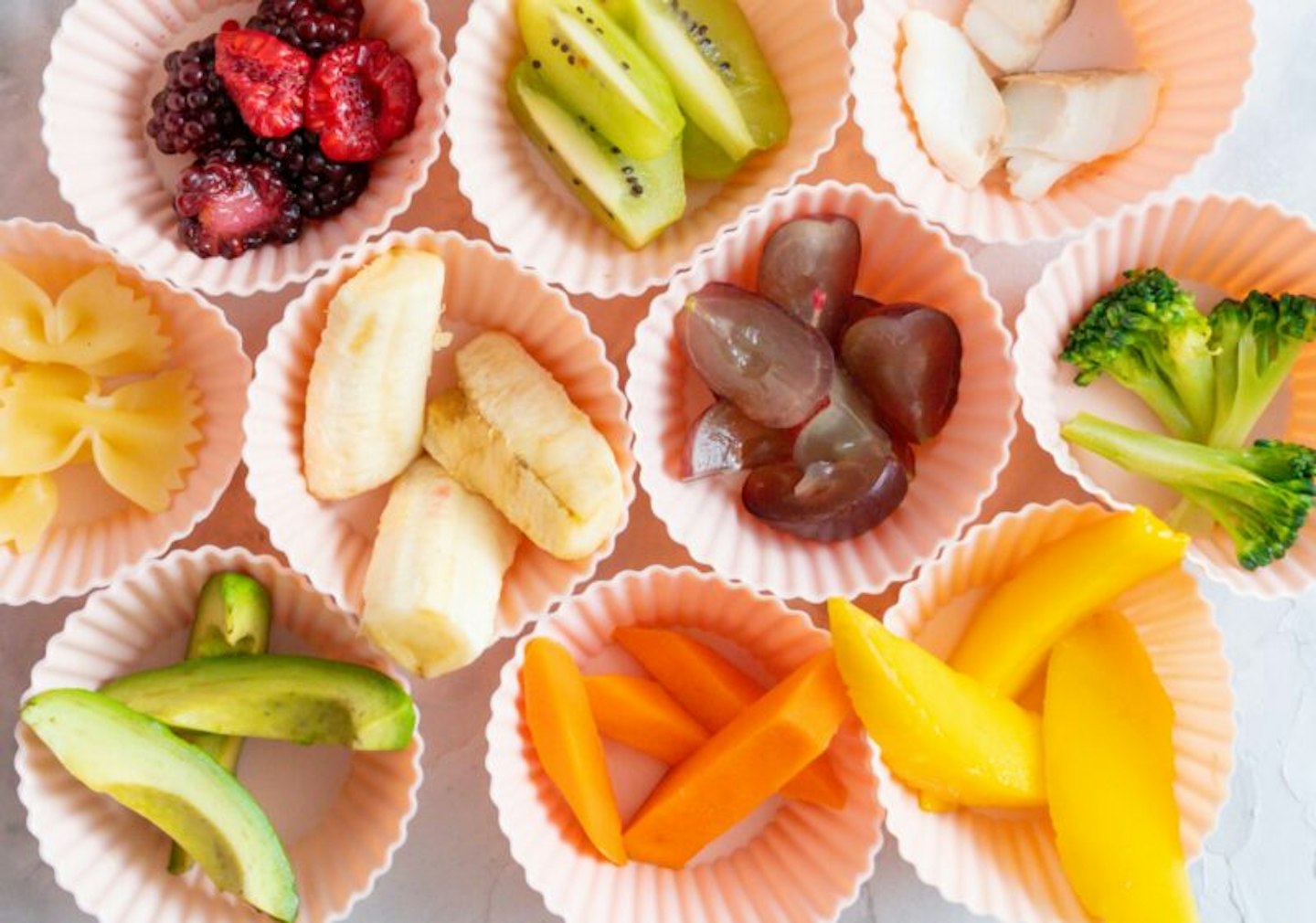
Combine snack time with learning by placing different-coloured fruit or snacks on a tray, coloured plates or a divided plate. Show your child how to sort the snacks by colour or shape. Let them try, using their pincer grasp and introducing early sorting skills.
Materials: Snacks of different colours, i.e. fruits, veg sticks, coloured bowls or plates
Why it helps: Fine motor skills, colour awareness, cognitive development, language learning
Safety tip: Always supervise closely and choose appropriate snacks
This Shape&Colour Sorting and Matching Game is a great option if you're looking for a game they can play outside snack time (though if you ask a toddler, any time is snack time!)
21. Mirror play
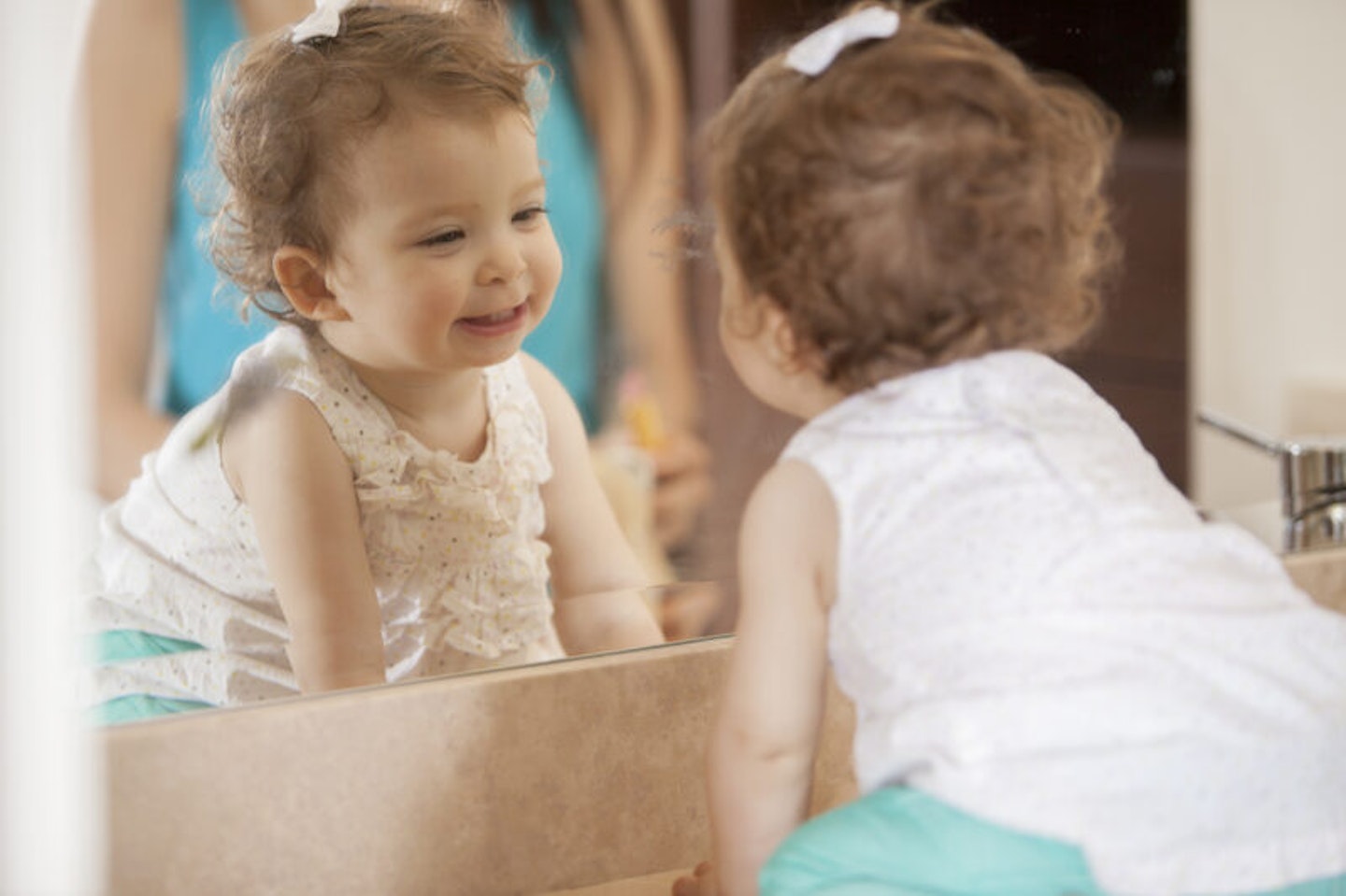
Sit with your child in front of a mirror, making faces together or pointing to features. Encourage them to touch their reflection and smile. Narrate what you see, fostering recognition and social development.
Materials: A child-friendly mirror
Why it helps: Recognition and social development, cognitive development, language learning, self-awareness, and social-emotional learning
Safety tip: Use a shatterproof mirror or one that's securely attached to the wall
22. Nature walk
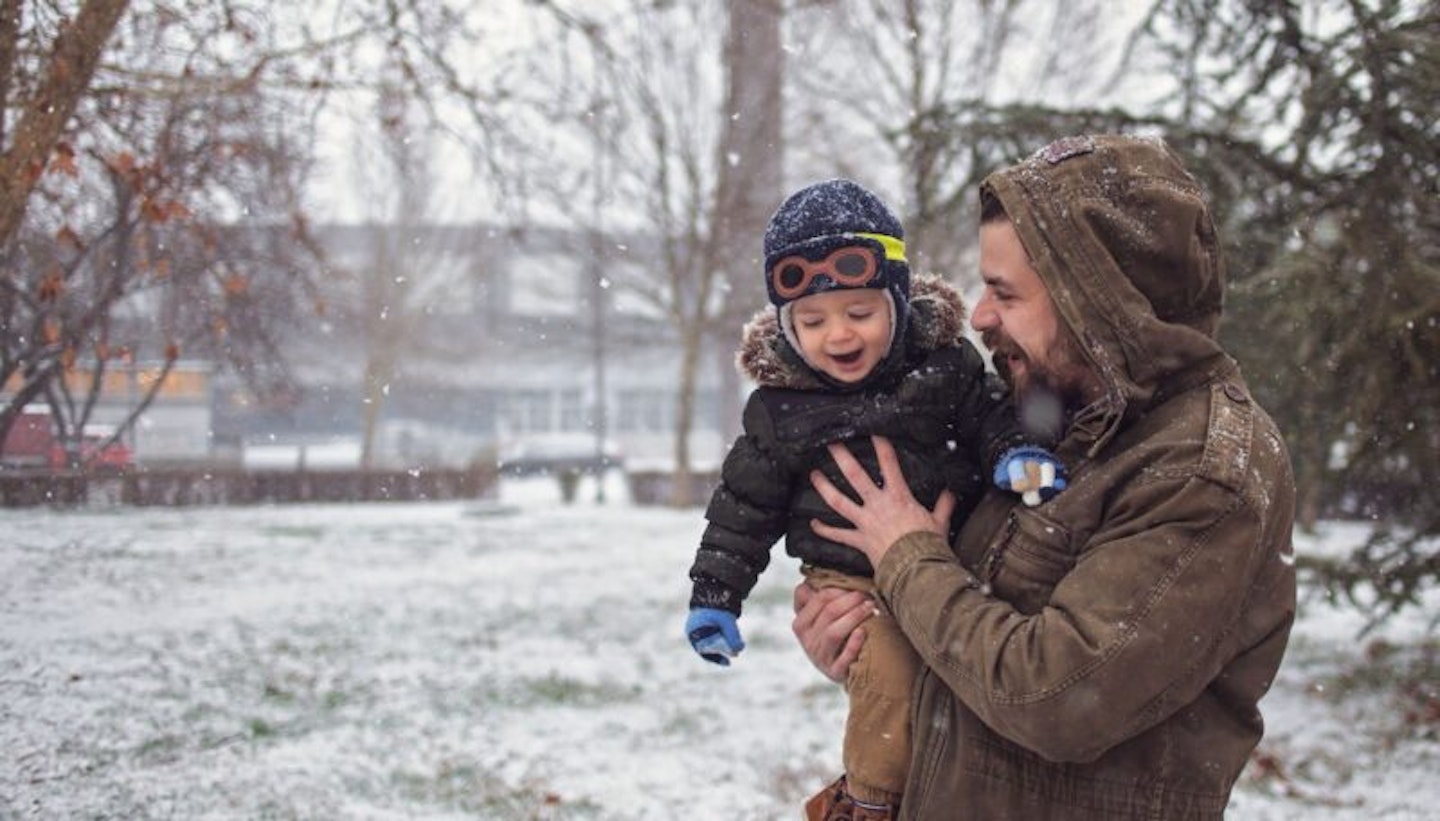
Go for a short walk outside, pointing out trees, birds, or cars. Describe what you both see and hear, answering your child’s babbles. Fresh air and new sights stimulate curiosity and early word learning
Materials: None
Why it helps: Social and cognitive development, language learning, and observational skills
Safety tip: Stick to safe, smooth paths and keep your child close
23. Making music
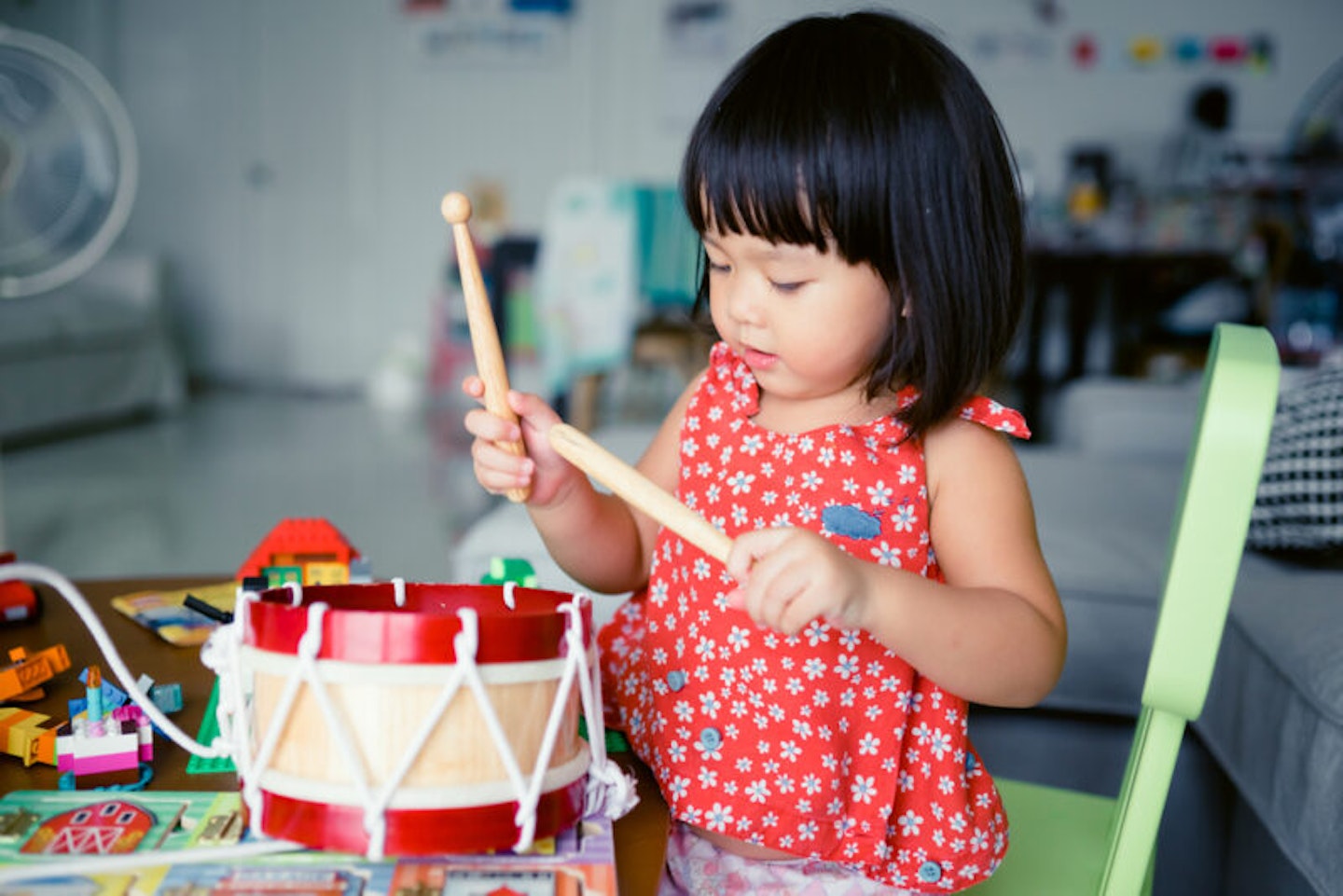
Offer your child safe musical instruments and show them how to beat a drum or shake a rattle. Take turns making music and singing along, fostering musical exploration and attention to sound.
Materials: Instruments or kitchen utensils
Why it helps: Rhythm, coordination, auditory skills
Safety tip: Avoid small detachable parts and use safe utensils
The Halilit's First Birthday Band Musical Instrument set includes everything they need to start making music, without bashing away at your pots and pans!
24. Animal sounds
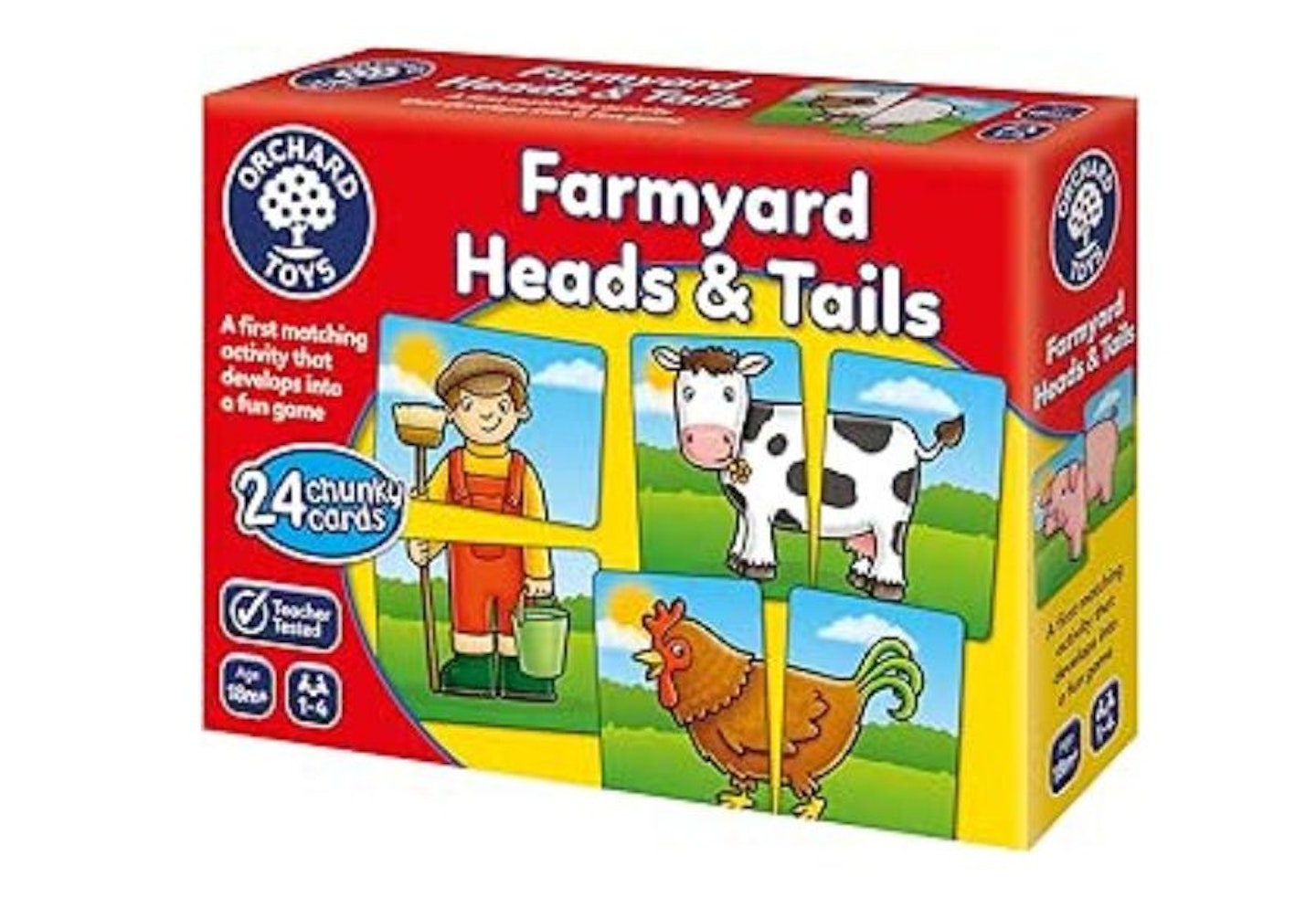
Hold up an animal card or toy and make the matching sound (“Moo” for cow). Encourage your little one to imitate the sound or point to the animal that makes that noise. You could use a game such as Orchard Toys Farmyard Head & Tails, or just point to pictures in a book.
Materials: Book, game, picture cards or soft toys
Why it helps: Language development, sound recognition
Safety tip: Use large safe toys
25. Do the laundry
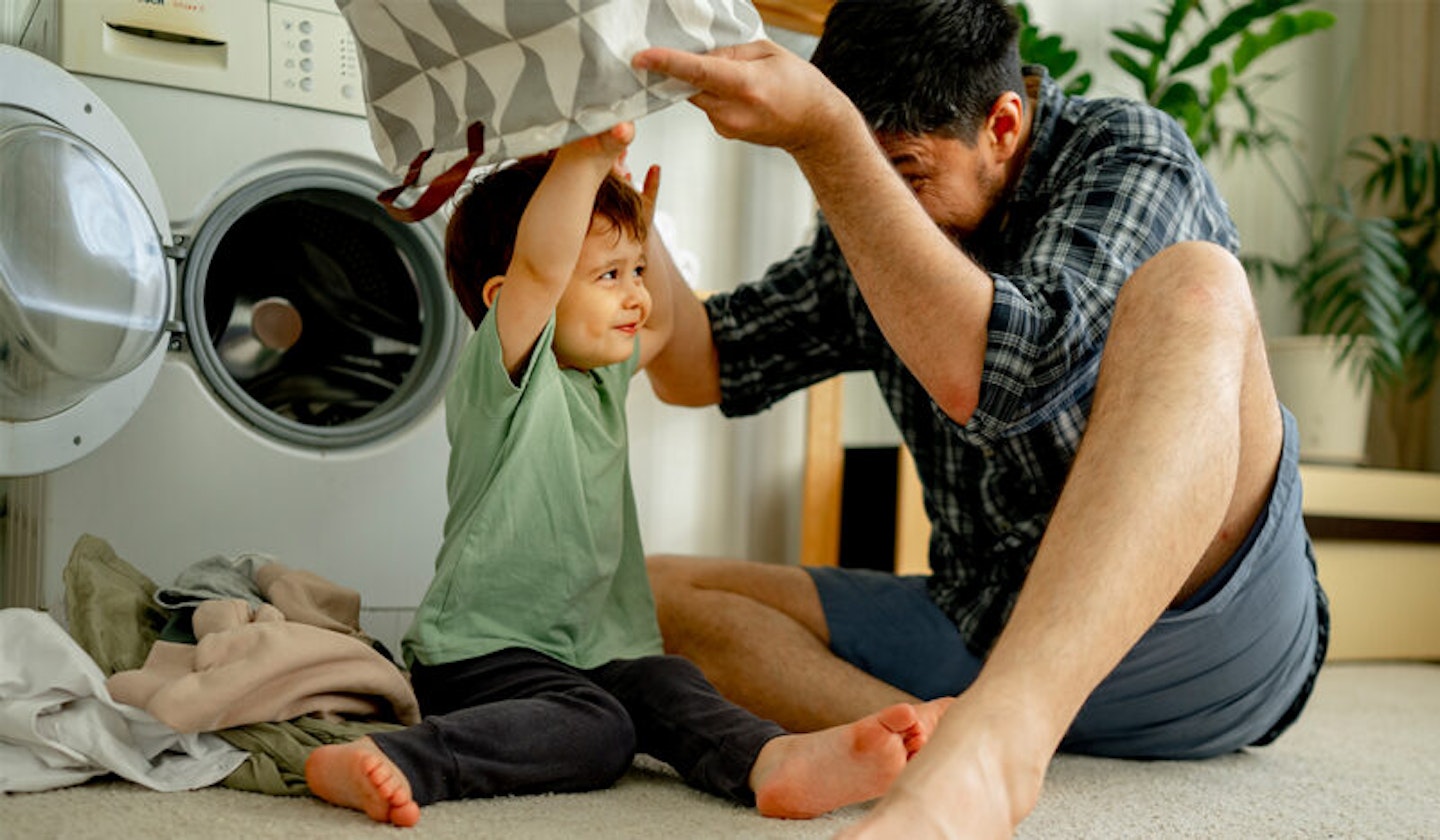
It's probably a job you have to do anyway, so why not turn it into an activity you can both enjoy (they might enjoy it more, of course!). Let your little one help you with sorting the colours of your clothes to help them learn their colours, and let them put them in the washing machine for you.
Materials: A pile of washing
Why it helps: Colours, gross motor skills, and cognitive development
Safety tip: Always supervise closely and keep laundry detergents and cleaning items far out of reach
26. Clothes-peg drop
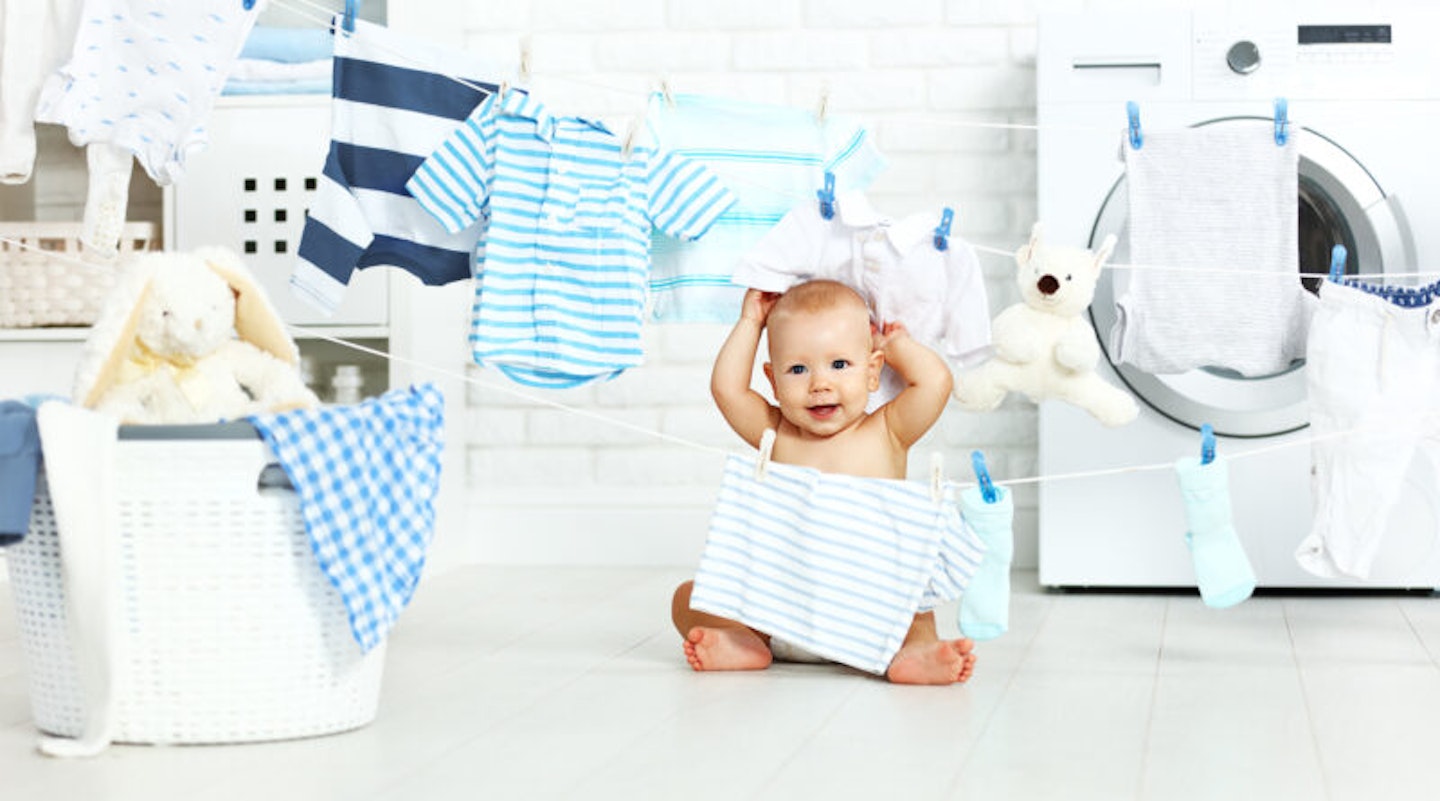
If they enjoy doing the washing, why not make hanging it out or bringing it in part of the fun too? Show your little one how to take the peg and drop it into a basket. If the pegs are different colours, you could help them learn their colours by encouraging them to group the right colour pegs together.
Materials: Washing clothes-pegs, a peg basket or bag
Why it helps: Colours, fine motor skills, cognitive and social development
Safety tip: Supervise closely around the washing line and ensure clothes-pegs are sturdy and too large to swallow
27. Sponge fishing
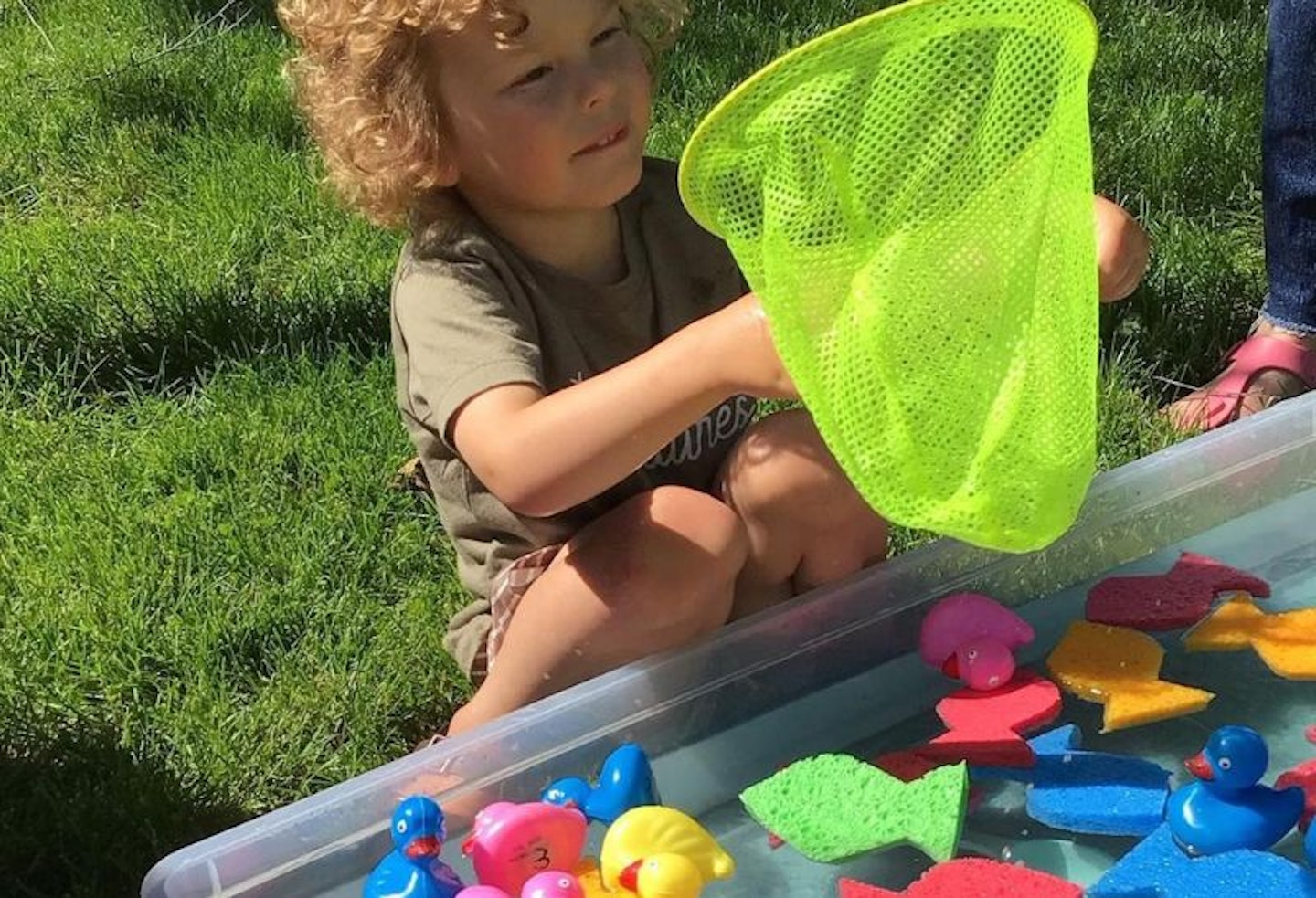
Set up a large tub or water and cut different coloured sponges into fish shapes. Give your little one a net or a sieve and get them to catch the fish. You could suggest catching different colours so they also learn the colours and words. We'd suggest doing this one outside or even in the bath.
Materials: Bucket or tub, sponges (these shaped sponges will take a job off your list), a fishing net or sieve
Why it helps: Colours, fine and gross motor skills, cognitive development
Safety tip: Never leave them unsupervised around water
If you want to avoid the water, this Montessori fishing game will let them work on the same skills and have fun, without the cleaning up afterwards.
28. Bubblewrap stomping

This one is messy but a lot of fun! Wrap your toddler’s feet in bubble wrap and let them step in paint and stomp all over big sheets of paper. Along with the popping sounds, they'll love seeing the colourful patterns appear and feel the unusual soft texture on the soles of their feet.
Materials: Large piece of paper, bubble wrap, paint
Why it helps: Colours, gross motor skills, cognitive development, creativity
Safety tip: Make sure they can't slip on the bubble wrap or put it anywhere near their faces
29. DIY sensory bottles
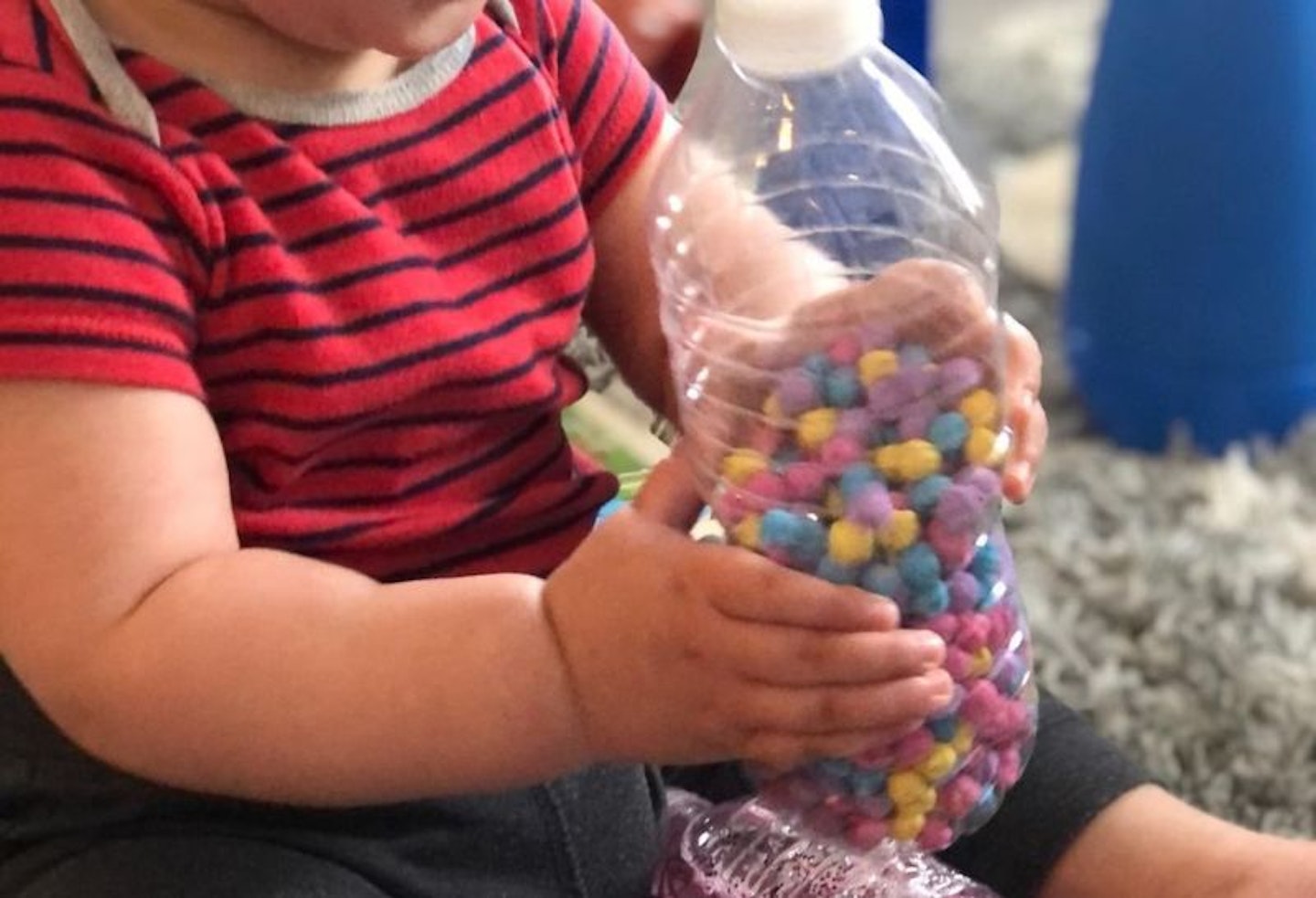
As well as being great for sensory play, you could also use these bottles for making music. Just fill a clean, empty plastic bottle with buttons, rice, glitter water, or anything that's likely to capture your little one's attention. Put the lid on tightly and let them shake away.
Materials: Plastic bottle, fillings
Why it helps: Colours, gross motor skills, sensory development, creativity
Safety tip: Make sure they can't undo the lid and don't fill it with choke-risk items
For an easy at-home option they can pick up anytime, we love this Fun Time Rainbow Rainmaker.
30. Cardboard tunnel time
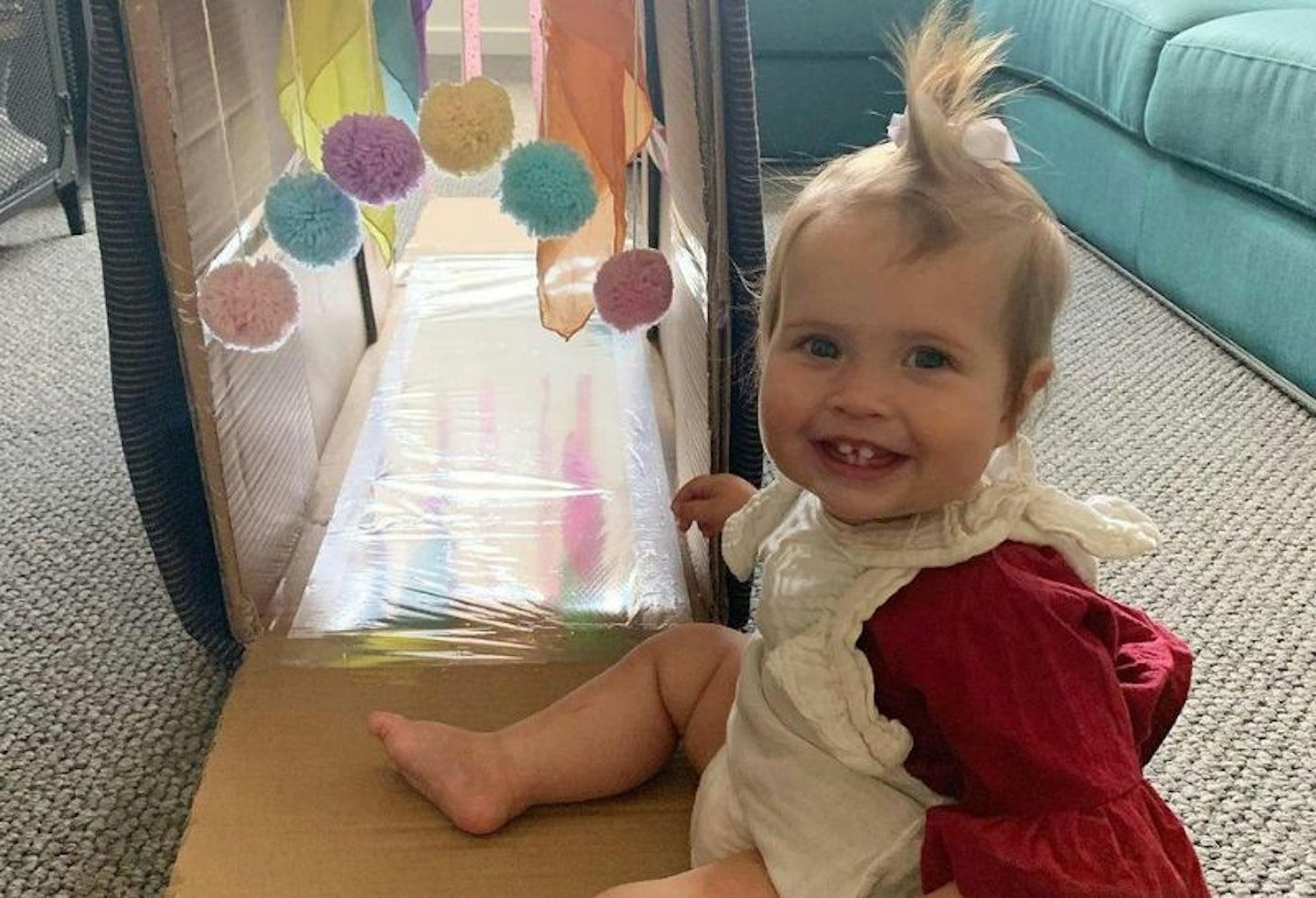
Sometimes it's the simplest things that create the most fun. Next time you have a delivery, save the cardboard box and open it at each end. Then just let your little one explore and crawl through it. You could even decorate the inside with textured stickers or foil to add more sensory interest.
Materials: Cardboard box, decorations
Why it helps: Gross motor skills, sensory development, creativity, and imagination
Safety tip: Supervise closely, especially if using decorations and don't use anything that could pose a choke risk
If you're looking for a tunnel they can enjoy for longer (and that doesn't need any crafty skills!), why not let them explore this Kids Play Tunnel Tent for Toddlers and fill it with these Textured Sensory Soft Balls.
The importance of play
It might seem like it's all fun and games (and it is!), but play is serious stuff. In fact, it's so serious that the UN created an International Day of Play on 11th June after finding that "play helps build relationships and improves control, overcome trauma, and problem-solving. It helps children develop the cognitive, physical, creative, social, and emotional skills they need to thrive in a rapidly changing world."
From imaginative play to puzzles and games, children learn through play. As Dr Gummer explains, "Play is crucial for toddlers as it supports their whole development. Through play, toddlers develop social skills, communication abilities, and physical and cognitive abilities. It helps them understand their world, fosters creativity, and enhances problem-solving skills. Engaging in play allows toddlers to practice autonomy and decision-making, which are essential for their growth and learning."
What activities should a one-year-old do?
As this list of activities for one-year-olds shows, playing with your toddler and helping their development doesn't have to mean expensive toys or elaborate games. It can be something as simple as a game of Peekabo or even just doing the laundry with them, as Dr Gummer notes. "Engaging with your child for short periods several times a day, such as 10-15 minutes each session, can be very effective. But also engage playfully with them throughout the day, whether it’s during meal times, or getting dressed, bathing or even changing nappies. Playful interactions are just as beneficial as pure play. This balance allows them to develop independence while still enjoying the benefits of interactive play with you."
If you're looking for ways to entertain your one-year-old, look for options that can help with their physical, cognitive and social development. For instance, good physical activities for one-year-olds can be things like dancing, tummy time or a pillow obstacle course. Threading pasta for necklaces or building towers from stacking cups can aid their fine motor skills, while busy boards and creative activities are brilliant for developing their cognitive skills. Sensory play is also an all-round winner; "Activities that stimulate their senses—such as touching different textures, hearing various sounds, and seeing bright colours—can enhance their cognitive development, fine and gross motor skills, and language abilities", explains Dr Gummer. Whatever activities you choose, just being there, talking to them and engaging with your one-year-old will help their development and also build a great bond between the two of you.
FAQs: Activities for one-year-olds
How do I entertain my one-year-old?
One-year-olds need a lot of entertainment but the good news is that because the world is still so new to them, they find most things entertaining. Focus on activities that help their physical or cognitive development, such as sensory play, creative activities like music or art, or everyday activities like bath time or 'helping' with chores.
What can I teach a one-year-old at home?
Every day is a learning day for a one-year-old. By just narrating your actions - whether that's describing what you're doing while they watch you make dinner, or telling them the colours of their food - you're teaching them words. Making music teaches them about sound and rhythm, as well as cause and effect. Every moment you spend with your one-year-old will help with their development.
How to stimulate a one-year-old's brain?
Talking, reading and engaging with your one-year-old will stimulate their brain, along with activities such as sensory play, 'freeze dance' where they dance to music and freeze when the music stops, and just getting out of the house and meeting other people.
Keep your child under close supervision at all times. All of these suggestions are intended for a parent and child to play together. Some of the products suggested may not be recommended for one-year-olds so please use your judgement and watch your child closely.
About the expert
Dr Amanda Gummer is a child development expert who founded The Good Play Guide in 2012. Amanda has a PhD in Neuropsychology, the Postgraduate Certificate in Higher Education and over 20 years’ experience working with children and families. Having worked in children’s industries for many years, Amanda is now widely considered the UK’s go-to expert on play, toys and child development.
About the author
Rebecca Lancaster is a Digital Writer for Mother&Baby, drawing on eleven years of parenting her two children to help others navigate their own parenting journey. As a freelance writer, she spent ten years working with leading lifestyle brands, from travel companies to food and drink start-ups, and writing everything from hotel reviews to guides to the best British cheeses. She’s particularly interested in travel and introducing her children to the excitement of visiting new places, trying different foods (less successfully) and experiencing different cultures.
